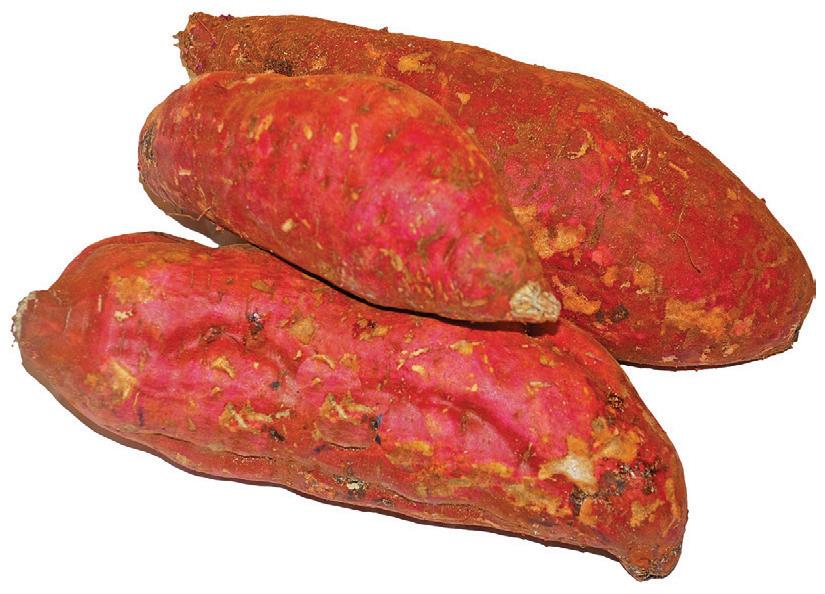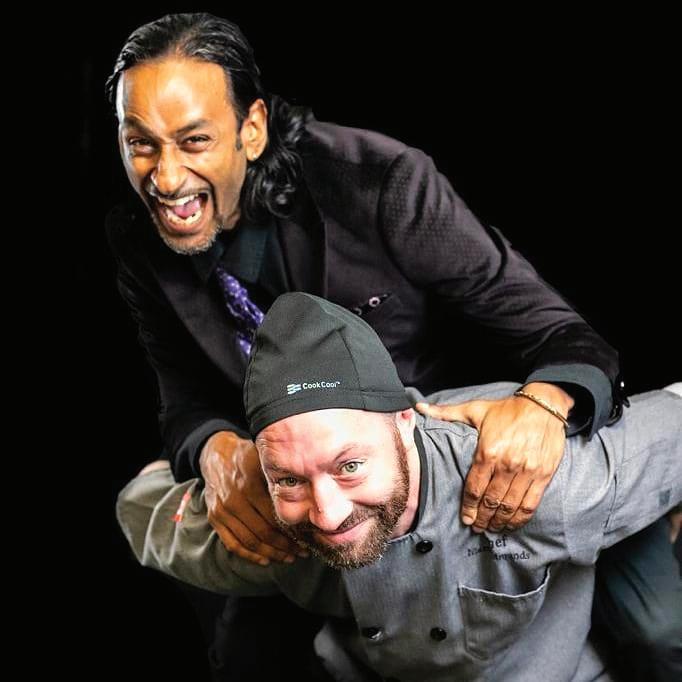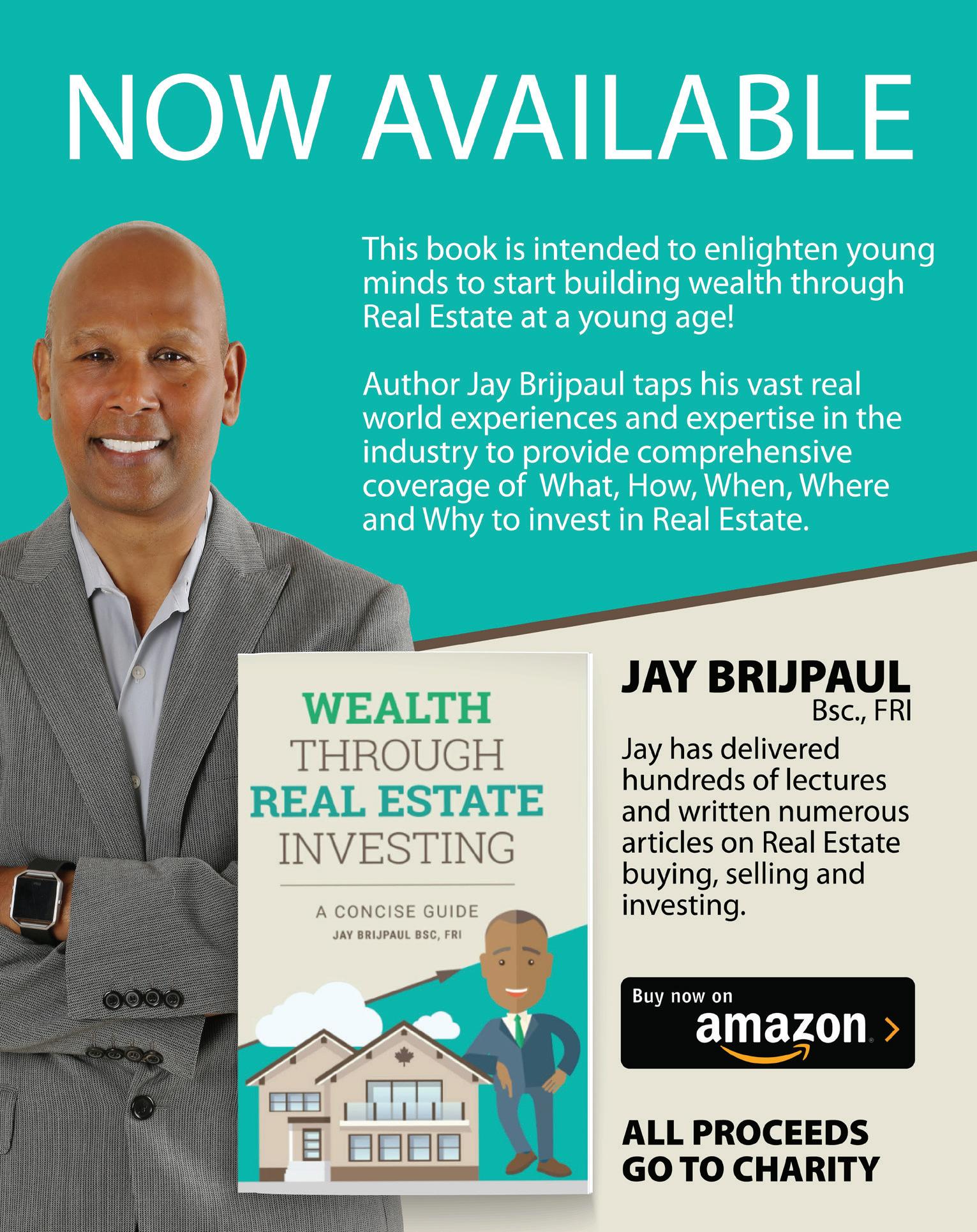
















“I am calling companies, reviewing the Jamaica Stock Exchange, keeping an eye on what is happening throughout the day, rushing to get the story so that I keep the community up to date. You have to be on top of things.”
I am always excited to hear stories from young journalists. It’s a field that is wide open, with many avenues and opportunities for careers in print journalism, broadcasting, and online journalism. These young people are interested in telling stories about people and the problems they are in, sometimes-complex stories that society is not ready to hear about.
While there may be a lack of Black Caribbean female journalists in some media outlets, it is important to acknowledge that there are indeed talented and accomplished individuals in this field. Representation is an ongoing issue in many industries, including journalism, and this is why it is important to amplify their voices and advocate for greater diversity and representation in the media industry.


From Yamiche Alcindor to Soledad
O’Brien there are undoubtedly talented Black Caribbean female journalists who are making significant contributions to the field, and I am elated to be at the genesis of another journalistic powerhouse.
I had the opportunity to work alongside our Woman Empowered just a couple weeks ago at the 53rd Annual Meeting of the Board of Governors of the Caribbean Development Bank in St. Lucia. She was brought to the island to collect and analyse information concerning newsworthy events within the world of finance and commerce. Her day typically involved digging up and deciphering key documents and data. Her ultimate responsibility is to provide accurate, actionable advice for readers in Jamaica.
Kellaray Miles was born in St. Catherine, Jamaica. The parish of St. Catherine is located on the south coast between the parishes of St. Andrew to the east, Clarendon to the west, and St. Ann and St. Mary to the north.
“It is a rural community, very picturesque,” Kellaray shares with me. “I grew up in an extended family, and I am the only child for my mom. Even though I was an only child, I didn’t feel like it, and my mom made sure of that. I had the presence of my cousins; we shared everything and did everything together. I have to admit, I was a spoiled child; my mom gave me everything.”
Kellaray’s early childhood education began at Sligoville Basic School, and she went to complete primary school at Dunrobin Primary.
“It was in Primary school that I noticed my talents; I realized right away that I didn’t like numbers, I preferred words. I loved to write stories and I really enjoyed comprehension and composition.
Teachers were always giving me the chance to use my imagination; my mom noticed that I had a talent. She was always impressed with the marks that I received in English, and teachers had a lot to say about my writing.”
She attended Wolmer’s High School for girls (2002 – 2009), and received a CXC Associate Degree in Humanities. Kellaray then went onto University of the West Indies (2009 – 2014), where she graduated with a MSc. in Government (Public Sector Management/ Comparative Politics), and a BSc. in Political Science (Major) with a Minor, with Honours in International Relations.

“I think another aspect of my upbringing that made my writing skills so strong was that I always had a lot of books. Nancy Drew was one of my favourite series. I always wanted to be in the know so I was always reading, reading, reading.
My writing was on a linear path; I was convinced that I was going to be an attorney, so I kept reading and writing. I didn’t really journal, but I enjoyed writing.”
Plans are great because they help you make decisions about what to do, or not do, in order to help achieve your goals. Like any plan, though, unexpected changes can occur that either help or hinder your life goal achievement. So was the case with Kellaray.


“Journalism wasn’t really by choice, I just ended up here. I was doing really well in school, and my marks were good enough to get me into law school. When the time came for me to accept, I had to come to a tough realization; the finances were way too much, so I decided to get more so in political science.
One of my friends in high school was working at the Jamaica Observer at that time. In Jamaica, if you don’t have connections it can be difficult to land a job, especially when you get out of school. She was working there as a proof-reader, and she was always commenting on my brightness. She asked if I was interested in coming to work there. Ummm, Yes!”
In the early 90’s Jamaica had developed the dubious reputation as a cemetery for failed newspapers. Up and coming newspapers had failed to adapt to changing reader preferences, and struggled to retain and attract new audiences. Producing and distributing a print newspaper involves significant costs, such as printing, paper, and distribution expenses. If revenues declined and operating costs remained high, newspapers would find it challenging to sustain their operations and make a profit.
It was against that intimidating, foreboding background that Butch Stewart teamed up with banker Delroy Lindsay and Trinidadian media mogul Ken Gordon in 1992 to establish the Jamaica Observer, which hit the streets on March 7th, 1993.
For Butch, Jamaica was too sophisticated and dynamic to be a “one-newspaper society”. To him, the Observer was a gift to Jamaica. It was about producing a different type of journalism that was focused on mirroring the best of Jamaicans to themselves and to celebrate the daily heroism of the ordinary people. Their success is due to the production of high-quality and reliable journalism. This includes: accurate reporting, in-depth research, thorough fact checking, and maintaining high ethical standards. They consistently deliver trustworthy news, which has gained
them credibility and has attracted a loyal readership. Now, Kellaray was about to become a part of this legacy.
“When I went in for the interview, the interviewer loved me. As a test, he gave me a financial reporter on a resort, and he asked me to write a small story. I wrote something, and he was like, ‘Good, Good!
Like that it started for me. I was told that there was a financial writer position opening up, and I seized the opportunity. It takes a certain skill set to be an effective financial journalist; skills that can be developed in journalism and/or business school, while gaining work experience, or through independent learning. I didn’t necessarily come into this position with all the skills needed, but I have worked on it, and challenging myself has made me a more proficient writer.”
Kellaray shared the lessons she has learned as a financial journalist. “You have to make numbers your friend: It’s important to get a good sense of the scale of numbers. You also have to understand the relationships between numbers: It’s vital for financial journalists to understand what growth rates are, what inflation rates are, and how financial data is measured.
I have become proficient at spotting trends versus random fluctuations: Good financial journalists can tell the difference between a legitimate pattern, and random fluctuations in financial data, and I pay attention to details: When looking at the reports of big, complex companies, I now have the ability to read the accounts in more detail to find out what’s really going. I also had to learn how to use proper terminology: as a financial journalist I have to be aware of what emotion could be attached to a particular word.
I think it was God’s plan for me not to get into law. I force myself to remember that my start does not determine my finish. If I could share a message with young women, I would say when you get an opportunity, go after it because you never really know what will happen. Even though I am a financial journalist, I have the opportunity and freedom to write what I need.
The inspiration that journalists and their work can give to others can help to change the world, and I am happy to be a part of that.”
The law will force the social media companies to negotiate commercial deals with news outlets and pay for news content.
“We have repeatedly shared that in order to comply [with the new law] … content from news outlets, including news publishers and broadcasters, will no longer be available to people accessing our platforms in Canada,” said Meta spokesman Scott Reid.
Yes. The day has come! The government has finally found another way to censor the Toronto Caribbean Newspaper. For our followers on Facebook, and Instagram, if you have not been seeing our posts, there is a reason for it.
Last year, Facebook parent Meta said that it was looking to stop Canadians from sharing news content in response to the country’s proposed Online Sharing Act. Now, the company has announced that it will begin tests on Facebook and Instagram that limit some users and publishers from viewing or sharing some news content in Canada. The testing has been taking place over several weeks and they say that a “small percentage” of users affected will be notified if they try to share news content.
Last week, I was trying to tag the Toronto Caribbean Newspaper in a post on Facebook, and realized quickly that I was not able to. I tried to type the entire word and they wouldn’t let me tag us. Hmmmm!
Facebook and Instagram’s parent company Meta says it will end access to news on its platforms in Canada after that country’s parliament passed legislation requiring internet giants to pay publishers.

The law, also known as Bill C-18, was introduced by the ruling Liberal government earlier this year. Modeled after a similar Australian law. In February 2021, the Australian law made it mandatory for companies like Google and Facebook to pay for news they use.
Facebook blocked publishers and users from sharing news links in Australia in response to the proposed law. The social network also mistakenly prevented government agencies and non-profits from posting on their pages in the process, but it reversed their ban a few hours later. Days later, Facebook agreed to talk to and enter negotiations with Australian officials.
What Bill C-18 is doing is forcing internet platforms like Facebook into revenuesharing partnerships with local news organizations. It came about, in part, because of Facebook and Google’s dominance of the online advertising market — with both companies’ combined taking 80% of revenue.
Let’s be real, the Online News Act is a fundamentally flawed legislation that ignores the realities of how social media platforms work, the preferences of the people who use them, and the value they provide news publishers.
Last year, Meta said it was trying to
be “Transparent about the possibility that we may be forced to consider whether we continue to allow the sharing of news content in Canada.” Google also temporarily blocked some Canadian users from seeing news content. The trial blocks news for up to 5% of its Canadian users.
Facebook has been signaling its willingness to remove news from its platform for weeks, and why, you ask? Well, the company says news has no economic value and its users do not use the platform to access news.
Oh really! How convenient! This is what is happening behind the scenes while they are keeping us distracted with forest fires, coronations, and all the other nonsense that is online that has no economic value.
Don’t you worry readers; we have something in store for them. The Toronto Caribbean Newspaper will not back down, we will not stop speaking the truth. You can find us at your local Caribbean grocery store, restaurant, or bar. We are not going anywhere!










ience in the face of Adversity.” The words of the poem are:







A graduation like no other, A year we won’t forget, A pandemic brought us closer together, In ways we won’t regret.
It was a great turnout! Over 500 high school graduates came out for the 10th Annual Walk with Excellence (WWE). For students who are entering post-secondary destinations, this signature event has become a rite of passage. The walk invited York University Faculty, Staff and Administration to welcome the incoming students. The Walk with Excellence celebrated the achievements of these 500+ high school graduates and culminated with a parade onto York University, symbolizing a community supporting the transition to post-secondary education, and the nurturing of a future of life-long learning, and the excellence, enthusiasm and potential of students from the community.
There were several groups and organizations that were a part of the planning for this year’s WWE. They include: Itah Sadu (co-owner of Blackhurst Cultural Centre formerly A Different Booklist Cultural Centre), Westview Centennial Secondary School, Emery Collegiate Institute, C.W. Jefferys, Downsview Secondary School, York-TD Community Engagement Centre (CEC) and the Toronto District School Board.






The walk commenced at CW Jefferys with a kick-off student dance presentation and special recognition given to Itah Sadu for being the driving force and visionary catalyst for her commitment, passion and dedication for the past ten years. The parade included Colleen Russell-Rawlins, Director of the TDSB and many community elders, community individuals, teachers and well-known supporters. The parade of over 600 students was led by community police and a marching band along Sentinel Road to a gathering point at the front of Vari Hall.
Students who participated in the walk wore T-shirts that were emblazoned with words from a poem titled, “Resil-
We faced uncertainty and fear, But held on to our dreams, We found strength in each other, And a silver lining it seems.
For the future is a canvas, A masterpiece is a canvas. A masterpiece yet to be, And with each stroke we make, We’ll shape our destiny.
The Walk with Excellence featured four Black female principals from the four participating schools. The event included dances from participating schools and speeches from alumni students.


Newly elected Toronto Mayor Oliva Chow joined the walk with the Grade 12 graduating students. She described the atmosphere of the event. “It is important to have hope. It is important that when we face difficulties, or barriers, that not only are we resilient, but we also say we can conquer if we stand together. This walk is about standing together. It is about celebrating excellence. It is about coming together and saying we have ten years of history to do this, and we belong here at York University. The energy is incredible. Lots of confidence. Lots of celebratory moods. It is joyous and fun and an affirmation of what you can achieve if you put your mind to it. You can feel it.”
Bursaries of $2 000 were awarded to several deserving students. Itah Sadu explained the history of the event to a local reporter regarding the stigmatization of the Jane-Finch community. She posed the question “What can we do to change this narrative? Greatness comes from all spaces and places.” She thought of an event that would celebrate the positives of all graduating students that would bring all the community together and focus on images that foster excellence.





It has been brought to the attention of Toronto Caribbean Newspaper that organizations representing Blacks and other racialized people who have decades of expertise in the areas of immigration and refugee law, criminal law, human rights, international law, civil liberties, and national security, to name a few are being left out of the process of shaping and having any input in Bill C-20.
Despite this present government’s verbal sermons on accountability, it is instead dancing around it by failing to properly consult with the communities that CCLA (aka Canadian Civil Liberties Association) represents and include them in the democratic process of law-making.
Even though Bill C-20 is a vital measure to ensure greater accountability of the Canada Border Services Agency (CBSA) and the Royal Canadian Mounted Police (RCMP) the big question here is, why were most of these equally vital organizations pushed aside?
How in a democratic and fair society can most of the important players be left off the team and a winning result be expected?
These are the organizations that have major concerns with Bill C-20
• Amnesty International Canada (English-speaking)
• Amnistie Internationale Canada (francophone)
• British Columbia Civil Liberties Association
• Canadian Civil Liberties Association
• Canadian Council for Refugees
• Canadian Immigration Lawyers Association
• Canadian Muslim Lawyers Association
• Canadian Muslim Public Affairs Council
• International Civil Liberties Monitoring Group
Let us look at what Bill C-20 means and how it will affect the people these organizations represent. Bill C-20: An Act establishing the Public Complaints and Review Commission and amending certain Acts and statutory instruments is an overdue bill that attempts to respond to the longstanding call to create a dedicated independent review and complaints process for the activities of the CBSA and make changes to the RCMP review process – amalgamating both under a Public Complaints and Review Commission (PCRC).
Many of the judgments that immigration hands down affect minorities especially Blacks in a big way, therefore, it should be imperative that all nine organizations who lend their services to these minority and disenfranchised folks be given a seat at the table when these vital laws are concocted, tabled and passed.
Likewise, many of the daily doings of the RCMP affect the lives of minorities and Blacks plus their families and as a result, they turn to these nine organizations to get many kinks straightened out daily, so my question for this government is “Who is more qualified and have a stake in shaping these laws like Bill C-20 than these nine organizations?”
These organizations are collectively saying, “We have decades of expertise in the areas of immigration and refugee law, criminal law, human rights, international law, civil liberties, and national security, to name a few.
The collective expertise of our groups can help the federal government fulfil the mandate of this Bill, expressed by the Minister of Public Safety in November 2022, to strengthen independent accountability and combat systemic racism and discrimination.”
Here are some of the flaws and many shortcomings of the proposed Bill C-20 as pointed out by the nine organizations named in this article. Aspects that should be addressed include:
• The need to ensure the independence of the PCRC’s operations
• The PCRC’s independent access to information
• Ensuring there is a mechanism for complaints on systemic issues
• Third-party complaints
• Broadening the PCRC’s redress and recourse powers
“Bill C-20 contains various limitations on complaints, reviews, and investigations, which are overly restrictive and unnecessary,” these are the words of Amnesty International Canada.
I had a short conversation with Julia Sande, the Human Rights Law and Policy Campaigner for Amnesty International Canada. I asked Sande for her views on why most organizations representing these victims were left out of Bill C-20 and the decisions surrounding it; here is what Sande had to say.
“I think the government had a stated goal of introducing oversight legislation, and so I think there is a focus on meeting that goal, but less of a focus on how they are meeting that goal and not how to make sure it’s the most effective and entangled oversight possible rather than just creating oversight that exists.
The bill falls short in some ways, one of our big concerns is that there is a provision section of the bill that talks about being able to transport people outside of CBSA care and control and into provincial prisons for people who are in immigration detention as long as there is another provincial oversight body.
We have concerns with that practice because the practice of sending people in immigration detention to provincial jail is contrary to human rights standards.”
I also spoke with Tim McSorley who is the National Coordinator of Interna-
tional Civil Liberties Watch Group. McSorley’s story was very similar to Sande’s; here is what he had to say.
“We have had limited amounts of input. One of our groups did appear at the committee but overall, we found there were very limited opportunities to provide feedback and input on the bill. We expected consultation before they came out with this bill and that never happened.”
McSorley explained that even though some organizations had done decades of work there were not invited to participate in the Bill C-20 process, “That we found troubling.”
I asked McSorley about his organization’s concerns surrounding Bill-C20 and the RCMP and his answer was, “I think our major concern is around who is able to make complaints, it is very limited in terms of whether or not a third party can make a complaint.”
Finally, I spoke with Samuel Escobar, Canadian Immigration Lawyer and founder of How To Immigration Law PC and the current Vice President, Communications and Media for the Canadian Immigration Lawyers Association (CILA). Escobar’s response was similar to Sande and McSorley. “I can’t speak as to why this government would allow this to occur, but what I can say is that just like the other organizations, I am frustrated with this.
The only thing we can do is call this out, call for transparency, accountability and just hope that the amount of news coverage this gets would sort of pressure the government from dodging the sort of processes that they just seem to bypass.”
After listening to McSorley, Escobar and Sande, I could not help but conclude that Bill C20 was put into place to “handcuff” these multiple organizations trying to help the disenfranchised. When government entities like the RCMP are allowed to investigate themselves, I think it’s time for Webster’s to change the meaning of the words “conflict of interest.”
On Saturday, June 24th, 2023, the Lifelong Institute celebrated its cohort 2020 graduates from its signature Leadership by Design (LBD) program. To cap the celebratory event, fifteen scholarships were awarded to these grade 12 graduates who excelled not just academically, but contributed significantly through community service.
It has been seven years now since LBD has been at the forefront of developing present and future young leaders in the: African, Black and Caribbean communities. The mission and vision of LBD is to develop leadership skills through opportunities that foster entrepreneurship and good citizenship. In addition, career exploration enables students to pursue a vibrant future.
The day’s event started with the singing of the Canadian National Anthem by Lorelei Eccleston, Principal of Rawlinson Community School. Xavier Mazzrotta, a Grade 12 (C20) student from Etobicoke School of the Arts, then read the land acknowledgment. Jomo Russell, one of the directors of the LLI, welcomed guests and visitors to the event. Gigi Adetunji, a Grade 12 (C20) student from Craig Kielburger Secondary School in Halton District School Board, introduced keynote speaker, Dr. Rhonda McEwan (President and Vice-Chancellor, Victoria University in University of Toronto). She is the senior executive officer responsible for Victoria University’s academic and administrative operations and reports to the Board of Reagents. Dr. McEwan shared about her background growing up in Trinidad and Tobago. She talked about her interest in helping students who face many challenges and being able to help them. She stated that making a difference comes from the heart, and from being at the right place at the right time. Graduates of the LBD program told her how they benefited and how this unique youth leadership de -
velopment program honed their leadership skills, maximized their potential and stretched them to move out of their comfort zone and develop intellectual curiosity.
Fifteen scholarships were awarded to C20 LBD students. Dr. Rhonda McEwan and five of the directors of LLI congratulated them. Four Raymond G. Chang scholarships, six CIBC Foundation scholarships, four PepsiCo Canada scholarships and one Trevor L. Massey scholarship were given to these gifted, talented and bright students.
Vanessa Wright, a grade 12 (C20) from Rosedale School of the Arts delivered the valedictory address. She shared some of the important aspects of leadership skills that she acquired from being a participant in the LBD program. She emphasizes that leadership is not a title or a position, but a mind-set characterized by positive qualities such as: empathy, collaboration, teamwork, enthusiasm, trust, honesty, openness and accountability.
Ethan McCalla from Richview Collegiate Institute and Taddy Kabba, from Sir Wilfrid Laurier Collegiate Institute also addressed the audience. A tribute was given
to Christene Ntiri, a student from Mayfield Secondary School who has sickle cell anaemia, by her sister, Elyana Ntiri, an LBB (C21) student who also attends the school. Angela King recalls the many events that the students participated in, especially the social events that connected students through being involved in shared communal events. She talks about the importance of intellectual curiosity and the importance of building capacity. Those who participate in the program will have to start off by setting leadership goals as the foundation of their future success. She talked about the value of job readiness skills such as: coding, resume writing, financial planning and career options.
Students who are interested can access free courses at the website: llileaders.com. They are specifically developed to provide enriching learning experiences. The three categories include: academic, arts and aspiration. In addition, there are SummerUp webinars available to anyone who is interested. Students, parents, educators and others can access them as a single online recording.
Why
This week I am presenting to the community a documentary that focuses on a subject that is controversial, an untold story, and exploration of a fascinating aspect of our world. The subject matter will evoke strong emotions and is meant to provoke thought. It provides credible sources, expert interviews, and verifiable facts. It is brimming with personal stories, powerful testimonials, and intense footage that contribute to its emotional resonance.
The Plandemic series is an eyeopening collection of films that dares to explore untold narratives. The series is widely recognized as the first to warn the world of crimes against humanity that are now being brought to light.
PLANDEMIC 1
The first PLANDEMIC, a 26-minute documentary, has been seen by over one billion people worldwide, setting a historic record. This documentary exposes hidden agendas, questions mainstream narratives, and sparks a global conversation.
PLANDEMIC 2: INDOCTORNATION
The premiere of PLANDEMIC 2: Indoctrination set streaming records with two million viewers attending the global livestream. Journey deeper into the web of deception as Plandemic two uncovers the untold stories and exposes the powerful forces manipulating our world.
PLANDEMIC 3: THE GREAT AWAKENING
This week, our cover story is focused on the last installment of the Plandemic Series, and I am going to do my best to list the points that really stood out, topics that we as a community, as a nation must pay attention to before it is too late. The documentary starts off funny, but this is not a joking matter. In this last installment, you will witness the culmination of truth-seeking as PLANDEMIC 3: The Great Awakening unravels the layers of corruption. Allow me to take you through some of the topics that you will be seeing.
“In order to conquer people in this societal environment, you have to do so through the mind.”
Edward Griffin 1969At a women’s night town hall in November 2013, then-Liberal Party Leader Trudeau was asked, “Which nation, besides Canada, do you most admire and why?”
“There’s a level of admiration I actually have for China,” Trudeau responded. “Because their basic dictatorship is allowing them to actually turn their economy around on a dime and saying, ‘We need to go greenest fastest, we need to start, you know, investing in solar.’”
“There is a flexibility that I know [former Conservative Prime Minister] Stephen Harper must dream about of having a DICTATORSHIP (yes, he said THAT word) that he can do everything he wanted, that I find quite interesting,” he continued.
Our Prime Minister worships a country that has allowed hundreds of thousands of their people to die, to be tortured, and to be controlled.
Trudeau invoked the Emergencies
Act for the first time in Canada’s history, allowing the federal government to freeze assets, suspend the insurance of the Freedom Convoy protesters, and target crowdfunding platforms and cryptocurrency transactions under “terrorist financing” rules.
“This is about following the money. This is about stopping the financing of these illegal blockades,” Deputy Prime Minister Chrystia Freeland said at a press conference. “We are today serving notice that if your truck is being used in these illegal blockades your corporate accounts will be frozen.”
“The insurance on your vehicle will be suspended,” she continued. “Send your semi-trailers home, the Canadian economy needs them to be doing legitimate work, not to be illegally making us all poor.”
Here was the beginning of what looked to be the punishing of those who stood up to the government; punishing individuals whose only interest was protecting the freedoms of themselves, their families, and their communities.
This idea of punishing individuals who do not comply is not novel. Let’s also look at a level of control that is slowly being implemented, the idea of the Social Credit System.
In 2020, China announced that it would be implementing a social credit system whereby individuals and companies throughout the country could increase their “social credit score.” This score aims to keep track of the good and bad deeds of citizens, rewarding those who do good in their communities and punishing those who don’t.
The data collected by China for this social experiment primarily came from digital sources, including: interactions on social media, search history, and purchasing habits. Citizens were monitored according to their actions on the internet, and each had a chance to affect their credit scores. Other sources for data included: government agencies, information from not-for-profits, criminal records, and financial institutions.
Finally, China began to use video surveillance to monitor an individual’s actions in the real world. They began using advanced facial recognition technology to track people as they moved through and interacted with the world around them.
Good deeds (subjectively) that increased your social credit system standing included: donating blood, doing volunteer work, taking care of the elderly, and safe driving practices. Purchasing books instead of video games and dedicating time to schoolwork were also examples of how to increase one’s score.
Bad deeds (subjectively) that decreased your social credit standing included: not paying your debts, unsafe driving, posting anti-government content on social media, spreading rumors (conspiracy theories), infidelity, and buying too many video games.
If you were good, you would get perks that included: decreased electric bills, access to universities and higher education, easier access to public housing, free gym access, and a higher chance of securing a loan. Some citizens with high scores also enjoyed lower public transportation costs and tax breaks, as well as no requirement for a deposit when booking hotels or travel reservations.
China is ranked as one of the world’s most miserable countries, and our leader wants to pattern Canada after it? Something does not sit well thinking about that.
As a journalist and researcher, I have become concerned about the consensus narrative I have been seeing in the mainstream. There is a disputed phenomenon of large-scale mass formation that has risen from four psychological conditions that currently exist and are closing off human thinking. I want to be clear about something here: people don’t necessarily act from an evil intent, but more a psychological process to survive environmental conditions that is 95% subconscious.
The four conditions that allow mass formation to emerge are:
1. Lack of Social Bond
It’s a psychological social media paradox: people are interacting together online with their avatars, but they aren’t their true selves. They don’t create the intimacy or vulnerability that comes from shared experience.
2. People Experience life as Meaningless or Senseless
A Gallup poll from 2012 done with people in 142 countries revealed that 63% of respondents admitted to being so disengaged at work that they were sleepwalking through their day, putting time but not passion into their work.
3. Free-Floating Anxiety
Free-floating anxiety is creating a deep psychological discontent. In Belgium alone, 300 million doses of anti-depressants, anti-psychotics and sleeping pills are used each year in a population of 11 million. A study from the World Health Organization says that one in five people—over 300 million—actually have anxiety disorders. They not only have anxiety but qualify as having disorders.
4. Free-floating Frustration and Aggression
People feel frustrated and aggressive without really knowing the cause of their annoyance and anger.
When these four conditions are fulfilled, if a narrative is distributed through the mass media identifying an object of anxiety (COVID-19) and providing a strategy (mask wearing and vaccination) to deal with that object, mass formation can thrive. All the free-floating anxiety and anger, now turning into panic, becomes attached to the object (COVID-19). Sudden connection through this heroic struggle together against the object creates a new solidarity, a social bond that has been lacking, which in turn, creates meaning. People then feel that they can control their psychological discontent by participating in the strategy, even if it’s utterly absurd.
Participation in the strategy has nothing to do with facts; it’s to preserve this new social bond created by fighting together to defeat the object of their collective anxiety (we are in this together).
“The Communists disdain to conceal their views and aims,” Marx declared in his famous manifesto (Manifesto of the Communist Party). “They openly declare that their ends can be attained only by the forcible overthrow of all existing social conditions. Let the ruling classes tremble at a Communist revolution.”
For the African-Caribbean community, this section might be triggering to some because it focuses on an organization that many of us hold in high regard, Black Lives Matter. PLANDEMIC: Part Three did an excellent job of exposing certain aspects of this movement that I had no idea about.
First of all, I bring up Karl Marx because the founders of BLM have spoken to the fact that they admire his views and have actually called themselves “Marxist!”
In a now scrubbed page off their website, BLM’s main objective was to disrupt the nuclear family. In September 2020 Black Lives Matter removed a page on its website that disparaged the “Western-prescribed nuclear family structure.”
The group, whose co-founder Patrisse Cullors has described herself and fellow co-founder Alicia Garza as “trained Marxists,” removed a page titled “What We Believe,” that included its public policy positions as well as describing itself as part of the “Global Black family.”
“We disrupt the Western-prescribed nuclear family structure requirement by supporting each other as extended families and ‘villages’ that collectively care for one another, especially our children, to the degree that mothers, parents, and children are comfortable,” the website formerly read.
Some critics claim that BLM aimed to “Dismantle the patriarchal practice” that leads to mothers having to work double shifts to make ends meet.

Let’s go back to Marx; he admits that destroying the family is a thorny topic, even for revolutionaries. “Abolition of the family! Even the most radical flare up at this infamous proposal of the Communists,” he writes. “The bourgeois family will vanish as a matter of course when its complement vanishes, and both will vanish with the vanishing of capital.”
In the documentary one the founders actually is happy that her book is compared to Mao’s Red Book. For those who don’t know Mao’s Red Book It’s an icon of China and communism as well as a work of propaganda. More than a billion copies have been published, making the book, often wrapped in its distinctive vinyl cover, one of the most widely produced of all time. During China’s “Cultural Revolution” it became virtually mandatory to own and carry one.
Well, what does this have to do with BLM? Let’s take a look at how like Prime Minister Justin Trudeau, BLM has expressed their affinity for China. The Black Futures Lab, a liberal initiative launched by a Black Lives Matter co-founder, lists as its financial sponsor the pro-China Chinese Progressive Association, raising questions about the extent of China’s support for the increasingly powerful protest movement. China has made no secret of its support for the Black Lives Matter movement. It has cheered on the demonstrators and slammed U.S. “racism and police violence” in the Chinese Communist Party outlet China Daily. You don’t have to believe me, but believe the facts; go to the website for the Black Futures Lab, a venture of Black Lives Matter founder Alicia Garza, and click on the “Donate” button. It will ask you to send your money to an obscure organization, the Chinese Progressive Association, explaining that “Black Futures Lab is a fiscally sponsored project of the Chinese Progressive Association.”
Now we have the state turning children against parents (something that has been reportedly done in China), we don’t have a clear definition of what a woman or a man is, and there is a decline of healthy femininity and masculinity.
There is so much in this hour and 44-minute documentary, but it is necessary for us as a community to connect the dots. Something is not right, and it is going to be hard to admit to ourselves, but many of us have been hypnotized.
We are in the grip of a narrative that is totally wrong
uled for June 12th -23rd, 2023 in St. Lucia under the theme “Marshalling Finance for Development: Access to Adequate, Affordable Financing.” This year, the Bank’s Annual Meeting seminar series was strategically designed to bring stakeholders together in order to devise solutions to urgent regional issues.
Lucia, while thousands more were able to view all public sessions via online platforms.
With its stunning scenery and vibrant cultures, the Caribbean is one of the world’s top tourist destinations. Sustainable use of ocean resources, known as the “blue economy,” offers potential for economic diversification, while preserving the region’s environment, as well as further development of other sectors with potential for growth. This makes the Caribbean a diverse region with significant economic potential and growth opportunities.
It is one of the reasons that the Annual Meeting of Governors brings together the bank’s highest decision-making body to discuss key development challenges facing the region. The meeting was held under the chairmanship of the Honorable. Philip J. Pierre, Prime Minister of Saint Lucia, who currently serves as Chairman of the Caribbean Development Bank’s BOG.
The Toronto Caribbean Newspaper was invited to the 53rd Annual Meeting of its Board of Governors, (BOG) which was sched-


The objective was to tackle the main constraints hindering access to the various categories of finance necessary for propelling economic growth and sustainability. Sustainable financial solutions for regional development and greater inclusion of private sector partners were high on the agenda, and a focus of the meeting was also about deepening the bank’s outreach to the youth and strengthening engagement with potential and upcoming young regional leaders.
“The Annual Meetings focus on access to adequate and affordable financing for development supports the Bank’s objective of building economic resilience through the provision of increased resources to fuel growth and reduce the vulnerabilities the Region faces,” said CDB President, Dr Hyginus “Gene” Leon. “Considering our internal challenges and the uncertainties coloring the external landscape, it is critical for us to address the urgent need to mobilize additional resources to meet current needs while responding to external shocks that can potentially derail our fiscal systems and development programmes.”
With technology on the forefront, they utilized a hybrid format with over 200 participants expected to attend events in Saint
In the next couple of weeks, I will be doing what Simone Jennifer does; going over the highlights of the week: from the meet and greet at the Governor’s home, to the opening and closing ceremony, I will share everything that our community needs to know about what is happening financially in the region, but first, it is time for a short history lesson, so that you are caught up with why there is an annual governor’s meeting.
The Caribbean Development Bank is a regional financial institution established by an Agreement signed on October 18th, 1969, in Kingston, Jamaica, and entered into force on January 26th, 1970. The purpose was to contribute to the harmonious economic growth and development of member countries in the Caribbean and promote economic cooperation and integration among them.
After a Canada/Commonwealth Caribbean Conference in 1966, a recommendation was made that a study be conducted to investigate the possibility of establishing a financial institution to serve the Commonwealth Caribbean countries and territories. The report, submitted by a team of experts in July 1967, recommended the establishment of a Caribbean Development Bank. This report was considered and accepted at a meeting of officials in Georgetown, Guyana in August of the same year and a committee formed to prepare the draft agreement and finalize the details for the Bank’ establishment.
This agreement was submitted in 1968 and a preparatory committee for the Bank’s establishment was set up and a project director appointed. Assistance was received from the International Bank for Reconstruction and Development (later called the World Bank), the Inter-American Development Bank and the United Nations Development Programme.
The Board of Governors is the highest policy making body of CDB and they meet once a year in one of the member countries of CDB. All of the powers of CDB are in the hands of the Board of Governors, which can delegate its powers to the Board of Directors except on certain matters such as: the admission of new members, change in capital stock, election of Directors and the President, amendment of the Charter, and termination of the operations of CDB.
Governors representing CDB’s member countries convene yearly for an annual meeting, during which they receive updates on critical operational developments that could have implications for the Bank’s day-today management. They also discuss proposed strategic approaches that could enhance CDB’s effectiveness and responsiveness to its borrowing member countries.
When you get a moment, visit our Classic Man section as I interview the Managing Director at 1st National Bank St. Lucia Limited. 1st National was the host of a special guest luncheon for the top executives, international delegates and other special guests that included, you know who, me!
michael@carib101.com
TC REPORTER
The Human Rights Tribunal of Ontario (HRTO) released a 64-page ruling in which it found the OPP had engaged in racial discrimination during its DNA sweep of migrant farm workers, and as a result of this bundle of evidence, the Ontario Provincial Police (OPP) and the Ministry of the Solicitor General have destroyed the DNA profiles that the OPP illegally obtained from 96 migrant farm workers in October 2013.
Back then the OPP conducted a DNA sweep near Bayham, Ontario where 96 migrant farm workers (mainly from Jamaica and Trinidad and Tobago) were forced to provide samples of their DNA as part of a criminal investigation.
This landmark decision made headlines in 2022, and what is more troubling is that the DNA samples had been obtained from workers even if they had alibis, or they did not match the suspect description.
The decision showed how the police took advantage of the systematic mistreatment experienced by participants of the Seasonal Agricultural Worker Program and used the workers’ employers to obtain the DNA samples fraudulently.
This does not stop here; OPP is also required to seal the investigative file containing the workers’ personal information, and also to develop a policy around DNA sweeps to ensure that future investigations comply with Ontario’s
Human Rights Code. The 54 migrant farm workers who pursued the case will each receive $7,500 in human rights damages (which collectively amounts to $405,000), and the destruction of the DNA profiles is part of a global settlement of the remedies portion of the case, which was scheduled before the HRTO last month.
Thanks to Justicia 4 Migrant Workers (J4MW), lawyer Shane Martinez and the immigrant workers who played a vital role in making sure that this case did not fall between the cracks. This is an historic and precedent-setting victory in the bigger struggle against racist and racialized policing. It also draws attention to the fact that much work remains to be done at the federal level.
Here are some of the demands that J4MW is pursuing, an end to unilateral repatriations and disbarment, and equal access to entitlements such as EI and CPP. At the provincial
level: ensure that all agricultural workers are provided with full protections under provincial workplace legislation including the right to healthcare, the right to unionize, and end enforcement of occupational health and safety protections.
HRTO’s decision hinged in part on the OHRC’s decision to get rid of racial unfairness in law enforcement noting that the OPP’s disregard of other aspects of the victim’s description and instead leaning towards race, also “Raises concerns of racial profiling under the OHRC policy.”
“Migrant workers are among the most vulnerable workers in Ontario, and we must continue to offer them the protections that all workers and community members are entitled to,” said OHRC Chief Commissioner Patricia DeGuire. “The OHRC is pleased with the result because of the historical challenges of establishing race-based cases.”
the Greater Toronto Area.
paul@carib101.com
There are no easy answers to the housing crisis that has gripped municipalities, provinces, territories, and towns across Canada. On the federal level, the Liberal government of Prime Minister Justin Trudeau has proposed several initiatives to kick-start the housing market. On the other hand, the rising interest rate by the Bank of Canada in the past few months has significantly increased the cost of borrowing for the average Canadian and contributed to record-high mortgage payments. On the provincial level the PC-led government has proposed opening the Green Belt to ensure that badly needed homes are built by 2027 as the population increases in
The lack of affordable housing is an issue that is pervasive across Canada. In the region of Peel, according to a report to City Council on December 21st, 2021, there were more than 28,000 people on the Region’s Centralized housing waitlist. Martin Reid, Councillor for Mississauga’s Ward 9 states in the March/April 2023 Tough Times newsletter, ”There is a homelessness crisis in Peel. Shelters are at capacity. Approximately 1,000 people are using the shelter system, with countless others living in encampments, on the street or couch surfing.”
There is no doubt that the removal of tax incentives and extra inducements to developers in the 1970s and 1980s had a major impact by drastically reducing affordable rental units. By building financially profitable condominium units instead of rental ones, there was a loss of moderate rental spaces for the average Torontonian.
The downloading of the costs of maintaining affordable housing in municipalities by the PC-led government of Michael Harris in the 1990s did not help either. The resultant transition from municipalities building homes and emphasis on public housing lead to huge prob -
lems from Toronto Community Housing which is still dealing with a backlog.
The Ford government passed Bill 23The More Homes Built Faster Act in 2023 that intends to build up to 2,200 units of affordable and supportive rental housing by 2027. Then there is the fact that about 7,400 acres of protected greenbelt watershed, and farmland will be destroyed to enable these high-priced residential developments.
On Saturday, June 17th, 2023, an important event was held inside the Centre for Social Innovation (CSI) at 720 Bathurst Street in Toronto. It was billed as a farmer’s market for community bonds. Tim Nash from Good Investing communicated via email with diverse organizations and invited them to the “Good Investment Fair.” Tim acknowledges the housing crisis and housing is a fundamental human need that could be solved through community bonds.
Many people may be familiar with bonds, which are debts that are loaned to corporations or governments as a way to raise funds. Tim notes, “A community bond works the exact same way, except we are loaning that money to a non profit or co-op in our local community.” The fact that the money remains in the community
and you earn a financial return means that it can help the individuals to build assets.
Tim mentioned three community bonds that he personally has acquired from:
• Solar Share
• Centre for Social Innovation
• Sketch
Tim believes that community bonds, which are intended for affordable housing across Canada, will be the most interesting developments in the next few years. Propolis in Kamloops, Places for People in Halliburton and Kensington Market Community Land Trust in Toronto are examples. Anyone interested in purchasing community bonds should do their homework. They are low-risk investments, although they are riskier than GIC’s or government bonds. There is regular liquidity, duration risk and a high degree of default risk. Tim notes that individuals should invest no more than 10% of their total portfolio and possibly 1% or less initially.
For a list of available community bonds check www.goodinvesting.com/impactinvestments

simone@carib101.com


When I received word on this, I was not surprised at all. I have written article upon article about this substance, warning the community about the dangers, and now the dangers have become a reality.
Aspartame is one of the most popular non-nutritive sweeteners (NNS) available on the market. In fact, chances are good that you or someone you know has consumed an aspartame-containing drink within the past 24 hours. While as
tion has considered the substance—aspartame—safe since 1974, others have long questioned that finding.
A 2017 study found that in a sample of nearly 17,000 Americans, about 25% of children and roughly 41% of adults self-reported eating, or drinking a food, or beverage containing NNS, including but not limited to aspartame.
Aspartame is sold under the brand names NutraSweet and Equal. It’s also used widely in packaged products especially those labeled as:
• diet
• sugar-free
• no or low calorie
• no, low, or zero sugar
Now, one of the world’s most common artificial sweeteners is set to be declared a possible carcinogen next month by a leading global health body, according to two sources with knowledge of the process, pitting it against the food industry and regulators.
The World Health Organization is planning to release two new reports on the safety of the ingredient used in drinks like Diet Coke and Diet Pepsi and its potential carcinogenic effect. The Center for Science in the Public Interest, a consumer advocacy group, has called aspartame the low-calorie sweetener of “most concern” because, it says, there is “compelling evidence that it causes cancer and is a potent carcinogen.”
Aspartame, used in products from Coca-Cola diet soft drinks to Mars’ Extra chewing gum and some Snapple drinks, will be listed in July as “possibly carcinogenic to humans” for the first time by the International Agency for Research on Cancer (IARC), the World Health Organization’s (WHO) cancer research arm.
A question that comes to mind is how much of this product can a person safely consume? This advice for individuals comes from a separate WHO expert committee on food additives, known as JECFA (the Joint WHO and Food and Agriculture Organization’s Expert Committee
on Food Additives), alongside determinations from national regulators.
JECFA, the WHO committee on additives, is also reviewing aspartame use this year. Its meeting began at the end of June, and it is due to announce its findings on the same day that the IARC makes its decision on July 14th, 2023.
Since 1981, JECFA has said aspartame is safe to consume within accepted daily limits. For example, an adult weighing 60kg (132 pounds) would have to drink between 12 and 36 cans of diet soda – depending on the amount of aspartame in the beverage every day to be at risk. Its view has been widely shared by national regulators, including in the United States and Europe.
I don’t know about you, but I don’t want to put ANYTHING in my body that causes cancer and could be a potent carcinogen. Community, we need to start doing more research on what we ingest, who we turn to for advice on what is good for us, and who we trust with our health and safety.
those who have built our community and nations. Since 2022 the Canadian AntiFraud Centre (CAFC) has received fraud reports totalling well over $531 million, with the senior’s portion being $148 million. Similar examples are seen worldwide. Research has shown that seniors lose on average 33% more funds than other demographics. To further complicate the situation, less than 5-10% of victims report scams and frauds to law enforcement, whether being ashamed or unable to identify the crimes.
Remember, if it is too good to be true, it probably is folks. Scams originating from Nigeria top the scales, with a letter or email sent to your loved one telling them they inherited or won a massive amount of funds, and all they have to do to receive this pay-out is provide personal information, bank accounts or credit card particulars.

Hot rooms with dozens to a hundred predators sit and call seniors whose names and phone numbers were acquired from senior homes, community centres and social clubs. A caller can spend a great deal of time speaking to the often-confused senior, ultimately acquiring information that can lead to fraud.

show acceptance, openness and patience to the predator, these scumbags violate
In Canada investment frauds represent $79.1 million in losses in 2022. $36.7 million losses in Ontario alone Romance frauds account for reported $19.5 million in 2022 Service scams represent $8.5 million while extortion frauds represent $7.7 million Emergency - Grandparent scams (calling pretending to be a child in trouble) amounts to $7.1 million in
The Caribbean also experiences these frauds against their seniors, totalling $112 million in 2022. The predator calls announcing the senior has won a cruise. All that is needed is their personal information.
Home invasions are a common way to rob and exhort funds. Someone who appears to be an energy worker (heating), or a governmental worker knocks at the door, and barges in once the senior opens it to see who is there. Such invasions have been brutal, ending in violence and long-term trauma towards seniors.
Many within the Caribbean have called for a gathering of law enforcement and judicial officials from all the islands to develop ways to protect seniors, investigate and prosecute organized criminal illegal actions within the region. Defrauding seniors is a multi billion dollar multi-national criminal enterprise requiring law enforcements full attention and efforts. An effort to unite forces against this treatment of seniors, initiated by American district attorneys has international and continental aspects to it. Efforts to fight international crime demand an international response.
simone@carib101.com


TC REPORTER
The emergence of regenerative medicine has resulted in substantial improvements in the lives of patients worldwide through the replacement, repair, or regeneration of damaged tissues and organs. It is a promising solution to challenges such as the lack of organ donors or transplantation-associated risks.
One of the major advancements in regenerative medicine is on-site (or ‘in situ’) bioprinting, an extension of 3D printing technology, which is used to directly synthesize tissues and organs within the human body. It shows great potential in facilitating the repair and regeneration of defective tissues and organs.
I received an email from Rishita
Sachanon on behalf of the Public Relations team of IOP Publishing, United Kingdom. It was about an interesting development known as in situ bioprinting, where biocompatible structures and tissues are 3D printed directly inside the body. This development has seen steady progress over the past years, and a significant development in this area is a newly introduced portable device, showcased in a study published in the journal Biofabrication, where researchers have introduced a portable device capable of printing biocompatible structures in situ. This breakthrough has the potential to transform the way doctors treat damaged tissue and organs and ultimately unlocks a wide range of applications in regenerative medicine, drug development and testing.
In a recent study, a team of researchers developed a handheld bioprinter that addresses key limitations of previous designs, i.e., the ability to print multiple materials and control the physicochemical properties of printed tissues. This device will pave the way for a wide variety of applications in regenerative medicine, drug development and testing, and custom orthotics and prosthetics.
A research team including Mr. Erik Pagan and Associate Professor Mohsen Akbari from the University of Victoria in Canada, developed a handheld in situ bioprinter with a convenient modular design, that allows the printing of complex biocompatible structures. “Two decades ago, my mother was diagnosed with breast cancer, which eventually led to the removal of her breast. This affected her well-being considerably. It made me realize that a technology like handheld bioprinting could not only help develop personalized implants for breast reconstruction that match the shape and size of the patient’s tissue, but also be used to create tumor models for the study of breast cancer biology. Such applications could significantly improve treatment outcomes for affected patients,” says Prof. Akbari while discussing his motivation underlying this study.
This versatile in situ bioprinter has several applications. Prof. Akbari elaborates, “In situ bioprinting is suitable for repairing large defects caused by trauma, surgery, or cancer, which requires largescale tissue constructs. In the long term, this technology can eliminate the need for organ donors, while also lowering the risks
associated with transplantation, allowing patients to enjoy longer and healthier lives.”
Another notable potential application of this device is the production of drug delivery systems. An operator could construct scaffolds or structures that release a precise quantity of drugs as well as cells at specific locations within the body. This would make drugs more efficient, minimize side effects associated with them, and improve their safety.
Although significant progress has been made in this field, currently used in situ bioprinting technologies are not devoid of limitations. For instance, certain devices are only compatible with specific types of bioink, while others can only create small patches of tissue at a time. Moreover, their designs are usually complex, making them unaffordable and restricting their applications.
The findings of this study can significantly benefit researchers and physicians dedicated to improving the scope of regenerative medicine and enable collaborative research, which can accelerate further development of this technology.
It has been over twenty years since the EDGE Program has played a pivotal role in the lives of young people all over the Greater Toronto Area. Details about the unique opportunities that it offers young Black males (Beau) and females (Debutante) between the ages 16 and 19 can be seen on the website: www.edgeprogram.net
These experiences empower them to develop and grow their social and professional engagement skills. The leadership opportunities that it provides nurtures their innate talents and abilities, and develops their: skills, mind-sets, and gifts. In addition to the youth participants, there are: juniors, boys and girls between the age of 7-10 who are participants in the program.
Some of the benefits of the EDGE Program that participants obtain are:
• Preparatory program to support Black youth transitioning from adolescence to adulthood
• A platform to inspire youth to collaborate and embrace their differences
• Encouragement to embrace experiences that fall outside their comfort zone
• Develop a sense of belonging and true inclusion

Youth participants develop leadership skills as a means of supplementing their academic achievement and maximize their full potential. Black youth are able to develop and grow their social skills and emotional skills in a supportive environment that is: healthy, inclusive, harmonious and connected. One of the distinctive features of the EDGE Program is the incorporation of ballroom dance.
Each year there is a goal to have four cohorts, each one consisting of twelve girls and twelve boys and twelve junior boys and girls. There are two locations where the EDGE Programs are offered: Met-
ro-East in Scarborough and Metro-West in Mississauga. This enables the program to reach potentially 80+ youth each year. The youth participants in the EDGE Program are vital to how they can benefit from it. They are able to collaborate to create a sense of teamwork and cooperation, which in turn helps to reinforce the communication skills and teach the participants how to appropriately interact with their peers in a structured and healthy environment.
The planning committee for the EDGE East involves the following individuals: Patricia Gloudon (Founder and Chair), Liz Valladares-Pereira (Chair, East-Scarborough), Tanya Grant (Program Coordinator *Metro-West), Rosa Berdejo-Williams (Workshop Coordinator), Serena Thompson (Community Outreach Coordinator), Leone Falconer (Lead Workshop Facilitator), Maureen Simpson (Venue Liaison), Tamara Henningham, Brianna Hylton (President, Youth Alumni) and Brian Coordinator (Beau Coordinator).
Chair Gloudon states, “I am proud to be part of this program that changes and impacts young lives. Together with education, we believe that style, etiquette, and leadership are vital skills for success. Our
focus is on teaching participants the poise and tenacity that will make powerful and lasting first impressions.”
Registration started on June 10th, 2023, for the EDGE-West Program. The cost for each debutante and beau is $400 (four payments of $100). The first payment of $100 is due upon registration. The cost for the junior debutantes is $200 (five payments of $50). The first payment of $50 is due upon registration.
The formal presentation of the EDGE-East will occur on Saturday, July 22nd, 2023. The debutante and beau who participated will be presented to their family, peers and society. At this formal ball, debutante and beau of the year will be presented to two participants who display the core values that characterize the EDGE Program.
Anyone interested in learning about the EDGE Program can check it out at:
• Website:www.edgeprogram.net
• Facebook:taketheedgeprogram
• Instagram:taketheedge
• Twitter:@EdgeProgram
Develop and grow your social skills with the EDGE Program
“Who can I bring as my guest,” I thought to myself? Right away I decided the best person to attend this event with me would be Honorable Consul General of St. Kitts & Nevis, Brenda Foreman. I knew that she was always up to a great time, and her energy would be perfect for the day.
twinkling fairy lights, and eye-catching decorations in all shapes and sizes. The lighting was expertly done, with a combination of colorful spotlights and swirling disco lights that created a mesmerizing grassy dance floor.
and fruit platters. The bartenders skillfully mixed creative cocktails and poured refreshing beverages, ensuring that no one went thirsty throughout the night.
“I want to extend an invitation on behalf of Angella Bennett and the Jamaica Tourist Board for you and a guest to attend the Crave on Saturday, July 1st, 2023. I apologize it’s a little last-minute but if you’re looking for a Canada Day party with a Jamaican vibe this is going to be a super fun event!”

I received this email the Friday before the long weekend from Jessica Napier (Senior Account Director, Fever Pitch Marketing Communications Inc.). It was print week, which for me means days and nights of editing, researching and writing, but I thought that it would be a good idea to get out and stretch my legs a little bit.
CRAVE continues to be Toronto’s #1 Premium Food & Drinks All-Inclusive Event. For one night, 7060 Jane Street was transformed into a fantasy electric garden, and Jamaica brought the spirit of Carnival to Toronto during this exclusive island-style party. As a VIP guest, I was treated to a day of all-inclusive authentic Caribbean cuisine and cocktails, live DJs, and Carnival-inspired entertainment.
CRAVE was an absolute blast from start to finish. As soon as we walked down the woodsy pathway, we were greeted by an explosion of vibrant colors and pulsating music. The atmosphere was electric, with an air of anticipation and excitement that was contagious.
The venue had been transformed into a wonderland of tropical creativity and imagination. Shimmering streamers,
The music was a perfect blend of popular: soca, reggae, old school, and hip hop hits and timeless classics, carefully curated by talented DJ’s who knew how to keep the energy high. People were dancing and grooving to the beat, their bodies moving in sync with the pulsating rhythm. The dance floor was a kaleidoscope of enthusiastic partygoers, their laughter and cheers filling the air.
One of the highlights of the party was the diverse crowd. People from all walks of life, different ages, and various backgrounds came together to celebrate. It was an opportunity to meet new people and make connections, with everyone sharing a common desire to have a great time.
The food and drinks were nothing short of amazing, and they had something for everyone, even picky eaters like myself. There were delicious appetizers,
The hosts of the party: Jamaica Tourist Board, and the CRAVE team had thought of every detail, ensuring that guests were comfortable and had everything they needed was at their fingertips. The staff were attentive, friendly, and always ready to assist. The overall organization was seamless, allowing everyone to relax and fully immerse themselves in the festivities.
As the night progressed, the energy continued to soar. Laughter echoed through the venue, conversations flowed effortlessly, and new friendships were forged. Time seemed to fly by, and before we knew it, the party came to an end.
Leaving the party, Brenda and I were filled with a sense of exhilaration and joy. It was an unforgettable experience, a night filled with laughter, music, and connections. CRAVE had done it again. They had set the bar high, creating memories that would be cherished for a lifetime.
munity Education Committee.
The community mourned the death of Lloyd Jefferson Mckell on Saturday, June 11th, after a long battle with cancer.
McKell was born in Trinidad and Tobago where he attended Queen’s Royal College, along with well-known Toronto activist Kenneth Jeffers. He immigrated to Canada in 1967 to attend the University of Toronto where he completed a B.A in Economics in 1972. Although he did not plan to stay in Toronto, he became interested in issues related to Caribbean immigrants. He served as President of the Scarborough Campus International Student Association, and later became the first Chair of the Scarborough Black Com-

Jeffers, who founded the Harriet Tubman Centre in 1972 recruited Lloyd. It was largely due to his leadership that HTC was able to expand and increase the services that it provided as well as initiate steel band and dance programs. Jeffers shares, “He was also a social activist and we both worked together on various projects in Toronto. One of his heroes was Nelson Mandela. Lloyd was an amazing cook, loved watching birds in his backyard and spent much of his travel time making road trips throughout Ontario.”
Lloyd began working with the Toronto Board of Education in 1976 where he was in charge of the SchoolCommunity Relations Department. Lloyd was a part of three city-wide parent conventions in which there were more than 1,000 parents who participated. He was a strong supporter for the development of Heritage Language Programs.
He was appointed Executive Officer for Student and Community Affairs in 2005 and subsequently as senior advisor to Chris Spence, first Black Director of the
TDSB. During this time, he was a part of ground-breaking initiatives such as: the development of Race Relations, International Languages, and the Black Cultural Heritage Advisory Committee. These played crucial roles in the formulation of programs and services that were tailored to the issues, concerns and challenges that African-Canadian students face on a daily basis.
Itah Sadhu, co-owner of the Blackhurst Cultural Centre wrote in celebration, “Lloyd Mckell, educator, friend, and community champion. We gave thanks for your gifts, and the time we spent walking on the journey of life. The ancestors will receive you with applause as we continue to tell your story. Ashe.”
Markene Claire Steele noted, “Lloyd was a superior educator and human being! Rest in Power.”

Another personal friend, Selwyn Rouse stated, “Lloyd initiated the formation of the Scarborough College (U of T) International Students Association (SCISA) and became its first President. One of the memorable events of that era was
the visit to the campus by a member of the Black Panther Party (USA). It was an unnerving situation for the college’s administration, bringing an awareness of anti-Black racism to the campus. May his Soul Rest in Peace.”
Ceta Ramkhalawnsingh wrote, “Lloyd Mckell was a trailblazer. I first met him around 1975 at the Toronto Board of Education when he and others initiated ground-breaking democratic initiatives to make the school more responsive to the diverse population. There was his commitment to Caribbean culture and to building upon Nelson Mandela’s legacy.”
Layne Clarke, owner/consultant stated, “Lloyd worked to ensure that equity was provided for all and especially fought to bring to the forefront the struggles of the Black community. He is committed to the cause and has devoted his life to his work. Lloyd continues to represent and advocate for the downtrodden which is the central tenet of the profession.”

simone@carib101.com TC
When you think about it, you typically spend a considerable portion of your waking hours at work. Full-time employees often dedicate around eight hours a day to their jobs, which accumulates to a substantial portion of their week.
The standard working hours in many countries are typically around 40 hours per week, with eight hours per day being the norm. Indeed, many people spend a significant amount of their time in their workplaces, often considering it a second home. You engage in your professional activities, interact with colleagues, and contribute to your organizations’ goals.
This can become challenging if you are working at a job that is toxic to you and can be incredibly challenging and detrimental to your well-being. Toxic workplaces are characterized by unhealthy dynamics, such as excessive stress, lack of support, harassment, bullying, discrimination, or a general negative and unsupportive atmosphere.
These types of work environments can take a toll on your emotional and mental well-being. Constant exposure to negativity, criticism, or toxic behavior can lead to increased stress, anxiety, and even depression. It can be mentally exhausting to deal with difficult co-workers, or a toxic boss day in and day out.
It’s common for motivation and productivity to suffer. Constant negativity and lack of support can demoralize and drain your energy, making it challenging to focus on your tasks and perform at your best. This can further perpetuate a vicious cycle of declining job satisfaction and diminished performance.
al strain of a toxic workplace can manifest physically, causing headaches, insomnia, fatigue, or other stress-related symptoms.
In saying all of this, there has been an increase in workplace well-being needs, and a number of organizations have taken the necessary steps to elicit positive change by implementing employee well-being practices. These have contributed to notable improvements in engagement, innovation, psychological safety, productivity and more importantly – the overall health of employees.
I am honored to tell the community that I have been asked to be a judge for the 2023 Canadian Workplace Well-Being Awards presented by the Canadian Positive Psychology Association and Workplace Strategies for Mental Health, compliments of Canada Life. This year I am proud to represent the AfricanCaribbean community; I am well aware of the fact that what constitutes a wellness solution for some cultures, may not necessarily be a wellness solution for other cultures. I have learned that there are many great workplace well-being initiatives to share. CWWBA aims to celebrate positive psychology in action and recognize the many champions of workplace well-being!
This year, they have expanded the awards so that there will be multiple winners per category who exceed a benchmark score demonstrating their commitment. Their mandate is to:
• Recognize and celebrate outstanding achievements in workplace well-being practices in Canada
• Curate case studies of impactful initiatives from winning organizations in several award categories and share these stories so other organizations can learn and benefit from their leadership
Recognition as a Workplace Well-Being winner can:
• Help your recruiting efforts to attract talented employees at a time of challenging competition
• Augment and further define your employer brand as a leader in workplace well-being at a time when many employees are struggling with mental health Assist with your employee retention Allow you to showcase your work in creating a psychologically healthy work-
place so others may follow your lead
Changing workplace culture and improving employee well-being is a daunting task, and not every organization knows where to begin. If your organization is a leader in workplace well-being and you have a caring culture where your employees flourish, they want to hear from you.
• Use of a unique Canadian Workplace Well-Being electronic badge to use on your website and signature line

• Being recognized by your peers at a Virtual Event
• Recognition on the Canadian Positive Psychology Association Website
• Facilitated networking session for winners to showcase well-being practices
• One complimentary Canadian Positive Psychology Association membership for one organization representative
There are four award categories depending on your sector and size of organization:
• Private and Public Sector: Small (5-99 employees)
• Private and Public Sector: Medium (100499 employees)
• Private and Public Sector: Large (500 plus employees)
• Nonprofit or Charity (any size)
The 2022 Workplace Well-Being Award winners were:
• Small – Private/Public Sector Organization – Sklar Wilton and Associates Ltd.

• Large – Private/Public Sector Organization – Best Buy Canada
• Nonprofit/Charity Organization – Creative Options Regina
If you are a Canadian based organization in the public and private sectors, and nonprofit/ charity organizations who have been in existence more than two years and have a wellbeing program that has been active for more than a year, one of this year’s winners could be you. You can apply at cwwa.wufoo.com/ forms/p1814lsu1pt5i5r/
The CWWA 2023 Awards Ceremony will be taking place on November 21st, 2023.
litical corruption and an overall fatalistic attitude of the public and much of the world. A wall is being built to hold back criminals, terrorists and create a sense of security for the prosperous Dominicans. So, the world is told. Nations can act just like you and I, seeing danger, fearing that this danger will come our way, and we therefore build walls separating ourselves from something that is thought to be coming our way. The wall will not work, just as the wall in Israel does not stop domestic terrorism in Israel, just as the wall between America and Mexico fails to stop those seeking a better life, with freedom and peace.
The Caribbean has nations gifted by Mother Nature with mass natural resources, oil and minerals, and beaches to attract tourist dollars. Those exploiting these gifts are now in a defensive pattern, protecting what they have, and surely not sharing with their regional neighbours. When the Caribbean fails to assist their neighbours, failing to unite behind the greater cause of Pan-Caribbean Unity, it fails all the Caribbean’s people.
Economic and social forces are dividing a region, draining it of its gifted wealth, dispersing the money not in the Ca-
ribbean, but elsewhere. Why can Caribbean leadership not recognize this and respond in kind. Old time colonialism divided and separated the peoples of the Caribbean. Divide and conquer right? Well, that is exactly what is happening here today.
New pressures from your Colonial Masters located in the: EU, USA, Britain, France, China and beyond continue to create division amongst those who should be backing each other up, supporting those in need, building their economies while building up the new Caribbean regional power, with its vast Caribbean diaspora there to support the region. So long as the Caribbean is divided, so too will most of its people not achieve what they truly need: long term employment, health care, safe housing, protection from criminality, and betterment for future generations.
The Caribbean requires leaders like Prime Minister Mottley to show the way, pushing nationalism and Caribbean exceptionalism aside, and present a plan for uniting the Caribbean and its peoples. Embracing all islands, no matter their political or economic attitudes into what can be a future maritime dynamo.

Ask any singer what they detest the most and they will say, “People who cough at concerts.” So how do you tell if your annoying cough is due to getting older, or being a little out of shape? Is it a common cold? Or could it be a life-threatening condition, such as chronic obstructive pulmonary disease (COPD)?
It’s estimated that one in four people globally over the age of 35 will develop COPD. Worldwide, it’s the third leading cause of death.
It’s worrying that the National Heart, Lung, and Blood Institute reports that
over 15 million Americans have been diagnosed with COPD and another 12 million don’t know they have the disease.
What causes COPD? It’s almost entirely due to smoking. Older women may experience more serious symptoms, even if smoking less than men. Other risk factors include exposure to second-hand smoke and airborne lung irritants such as toxic fumes and heavy dust.

People at a concert who can’t stop coughing may be suffering from emphysema, or long-standing bronchitis, and often they will have both conditions.
However, the underlying pathology is quite different. In emphysema, the air sacs that transport oxygenated air to and from the lungs have lost their elasticity, leading to chronic shortness of breath and lack of oxygen. Those suffering from chronic bronchitis have inflamed lungs clogged with mucus. This limits the intake of oxygen and builds up carbon-dioxide in the blood.
What is the answer to self-inflicted COPD? Shakespeare aptly wrote, “The fault, dear Brutus, is not in our stars, but in our-
selves.” Some people, despite medical evidence that smoking causes COPD and most lung cancer, still play Russian roulette. They do not need a hard-working family doctor. They need a psychiatrist!
Don’t think the solution is to quit at the first sign of trouble. These diseases are sneaky without major symptoms at first. By the time you notice you’re short of breath going up an easy flight of stairs, you may be too late in getting the message. There are some things your doctor can do to help to reduce further damage to the lungs. Get a flu shot, the pneumonia vaccine, avoid fireplace smoke and other pollutants, and adhere to drugs prescribed by your doctor. If you have signs such as fever, more difficulty breathing, tightness in the chest and increased mucus, see your doctor. Inhaled bronchodilators use drugs to relax the airway muscles making it easier to breathe. Inhaled corticosteroids can be added to reduce inflammation in the lungs. Getting oxygen with a mask may be necessary.
There’s new evidence that long-
term use of antibiotics such as azithromycin may decrease the number of recurrent COPD flare-ups after one year.
What about surgery? This is a last resort and only feasible for some cases. Diagnostic X-rays and CT scans may reveal a part of the lungs that is severely affected. Removing the most diseased lung tissue might enable the remaining healthier parts to work better. This may improve breathing ability, but it can also make the problem worse.
A lung transplant is another possibility, but new organs are a rare gift.
We hope in the years ahead there will be other ways to treat this debilitating disease, but let’s end with one last warning message. For now, COPD has no cure and will progress when smoking continues. COPD is a terrible price to pay when it means prematurely leaving loved ones needlessly. Doctors see this over and over.
What about doctors? Years ago, cocktail parties in the homes of doctors would be full of tobacco smoke. Not today. Most have heard the message.
Club are:
• Motivate students by getting them to engage in what is most important to them
• Promote social literacies such as networking, authentic engagement and discussions around high-interest and non-fiction texts
The dates and themes of each session are:
Session 1: Thursday, July 6th (Virtual): Understanding Black Joy Guest speaker, Ginelle Skerritt, Chief Executive Officer, York Region Children’s Aid Society
Schools at York Region District School Board (YRDSB)
• Jeewan Chanicka - Director of Education at Waterloo Region District School Board
• Alison Gaymes - Superintendent at Toronto District School Board
• Ramon San Vicente - Principal of Dixon Grove Junior Middle School in the TDSB
It will be an empowering and elevating Summer 2023 as the Nubian Book Club (NBC) celebrates its 16th anniversary. It is one of the highlights of the summer as students and staff from school boards in the Greater Toronto Area as well as Ottawa celebrate the power of literacy to energize minds, empower souls, encourage hearts and elevate spirits.
In addition: parents, community individuals, and educational stakeholders have been a vital part of each summer session. These summer sessions will continue the tradition of uplifting and building community through literacy. The NBC is a network of students, parents and community members who are engaged in the academic and social well-being of students. Furthermore, it uses literacy as a tool for advancing student success, leadership skills, and community engagement among youth, particularly those of African-Canadian heritage.
The four stated goals of the Nubian Book
• Stimulate discussions, speakers and participants make connections to different texts and share various experiences
• Expose students to people they may not otherwise meet and reinforces the value of reading and gaining knowledge and experience. They learn that literacy is something that enriches and creates community
Prior to the pandemic the summer sessions were held at Donna Cardoza’s home in York Region. The theme for 2023 will be “Cultivating Black Joy: Critical Literacy Through Student Voice.” The promotional material for the NBC 2023 mentions that the sessions will delve into the power of cultivating Black Joy and centering student’s voice. Together they will explore literature, engage in critical discussions and uplift the narratives that celebrate Black excellence. They want to create a space where our youth and community can: heal, grow and thrive. Black Joy is an excellent focus to highlight its vital power.
Session 2: Thursday, July 6th (Virtual): Cultivating Black Joy Guest speaker, Dr. Andrew Campbell (Dr. ABC), Assistant Professor, Teaching Stream in Leadership for Racial Justice in the Department of Curriculum, Teaching and Learning (CTL) at the University of TorontoOntario Institute for Studies in Education
Session 3: Thursday, August 20th (In-person): Embodying Black Joy
The list of facilitators for NubinBook Club 2023 includes the following:
• Dr. Camille Logan - Associate Director of School Engagement & Equity at PDSB
• Dr.Vidya Shah - Assistant Professor in the Faculty of Education at York University
• Clayton La Touche - Assistant Deputy Minister, Student Support and Field Services

• Cecil Roach - Associate Director of Education, Equitable Outcomes and
• Prince Duah - Superintendent of Instruction for Central Schools with the OCDSB
• Dr. Carl James - Jean Augustine Chair in Education, Community and Diaspora
• Deanna Heron - Principal in York Region District School Board (YRDSB)
• Phiona Lloyd-Henry - Coordinating Principal for System Transformation & Capacity Building
• Pierrette Walker - Educator at YRDSB and Performance Plus Teacher
• Bethel Soressa -Technical blogger at bethel soressa
• Jacqueline Lawrence - Diversity and Equity Coordinator at Ottawa Carleton District School Board (OCDSB)
• Mubarek Baker - Middle School Success Counsellor with Toronto District School Board
Everyone is welcome to attend the NBC. Visitor can make registrations: bit.ly/nubianbc2023. For more information contact Donna Cordoza: (647)-403-5821

Question for the readers this week; how concerned are you about the ingredients that you are putting in your body?
The food origins survey, an Angus Reid Study of 1,504 Canadians, put a lens on how much people value food traceability, natural ingredients and feeling safe with what they are putting in their bodies. Overall, nine-in-ten Canadians (91%) feel it is important to understand the ingredients they are putting in their body, and when asked about their food concerns, 84% of Canadians feel concerned with where their food comes from. The study also shows that Canadians value quality ingredients. Three quarters of Canadians (74%) are willing to pay more for quality foods.
“We conducted this survey to get a benchmark on Canadians’ food habits and concerns,” said Nicola Bertinelli, presi-










dent of the Consorzio del Parmigiano Reggiano. “Not only can we see that Canadians understand the importance of quality ingredients, but the results highlight their concerns about food safety.”
Food traceability is increasing in concern for Canadians. 76% are yearning to know where their food comes from and agree that being able to trace their food to its source makes them feel safer.
There is now a new technology that has the ability to deliver previously unseen levels of traceability, inventory tracking and control, product authentication, quality-assurance testing, product sterilization, and consumer safety.

Traceability digital labels are electronic tags or codes that provide detailed information about the origin, production process, and supply chain of a product. These labels utilize digital technologies such as: barcodes, QR codes, or RFID (Radio Frequency Identification) tags to track and trace the movement of products throughout their lifecycle.
The purpose of traceability digital labels is to enhance transparency and accountability in supply chains. By scanning or reading the digital label, consumers, retailers, and other stakeholders can access real-time information about a product’s journey from its source to the point of
sale. This information may include:
• Origin and authentication: The label can verify the product’s authenticity and provide details about its source, such as the farm, manufacturer, or producer
• Manufacturing and processing details: The label can provide insights into the production methods, quality control measures, and certifications involved in the manufacturing process
• Ingredients and components: Consumers can learn about the ingredients, or components used in the product, including their sources, potential allergens, or specific attributes (e.g., organic, fair trade, etc.)
• Environmental impact: Some traceability labels may include information about the product’s environmental impact, such as carbon footprint, emissions, or sustainability certifications
• Supply chain transparency: The label can reveal information about the various stages of the supply chain, including transportation, storage, and distribution. This helps in identifying potential bottlenecks, delays, or issues related to the product’s journey

To support Canadians’ desire for food safety and traceability, The Consortium of Parmigiano Reggiano has partnered with Kaasmerk Matec (Kaasmerk) and p-Chip Corporation (p-Chip) to launch a line of food-safe and secure traceability digital labels for its Parmigiano Reggiano cheese wheels.
Kaasmerk Matec and p-Chip Corporation partnered with The Consortium to complete this innovation program for a device integrated into a casein label on the rind of Parmigiano Reggiano. This creates a new industry-standard, food identification method. This scannable food tag is smaller than a grain of salt and highly durable, delivering next-generation visibility and allowing consumers to track their product from start to finish.
“Parmigiano Reggiano is one of the world’s oldest and most famous cheeses, and it is a product that symbolizes Italian produce,” said Nicola Bertinelli, president of the Consorzio del Parmigiano Reggiano. “By being the first to incorporate these secure digital labels onto our cheese wheels, we can continue to ensure consumer safety, bringing the traceability and the authentication of our products to meet industry 4.0 technological targets.”
the experimental injections, but it goes much deeper.”
The group statement reads like something out of a very bad movie, but after reviewing the facts there is no room for doubt.
Members of the private members association: Lakeshore Sovereign Assembly and True North Guardians Alliance, and participants of The Peace Treaty Committee have brought some troubling revelations to our attention here at Toronto Caribbean Newspaper.










These members who I shall not name for obvious reasons, had lots to showcase, including their receipts too. Their opening statements read like this.
“We have been warning people over the past three years; what they think has happened and what really happened are two very different things. After intense research and monitoring of the data and evidence, there are some things that everyone needs to know; especially if they were injected with the bioweapon.”
“Everyone knows by now that the narrative was false in that no immunity was conferred, nor was there any mitigation of transmission by receiving
The masks, tests, injections, and lockdown measures were all based on hype and political propaganda, they revealed, and it’s much worse. Imagine withholding natural/effective treatments that they knew would work. Yes, your government, Canadians did all this.
“This is not opinion or conjecture,” the document revealed, “We have all of the evidence i.e., contracts both military and civil, the actual Pfizer documents that show that they knew that serious damage would be caused by their untested, gene-editing nanotechnology. It’s all in the patents, real-time metadata and much more.”
The fact is that there has been a gross breach of trust and criminal negligence by medical regulatory bodies, the shameful police services who have turned a blind eye to the evidence presented, the politicians, and all those who helped perpetrate this.
These documents were convincing and very detailed; they talked about how all levels of government were corrupted with grifting and conflict of interest including the judiciary arms, all-functioning outside the democratic process.
“The ongoing scandals of the








Trudeau government are being exposed on a nearly daily basis: the Trudeau Foundation China election interference and the privy council cover-up of the actual vaccine injuries that are taking place; the recent false flag wildfire rampage, which is intended to push a climate change agenda,” the members took no prisoners in the documents they presented.
“The continual attack on the children and families with what is being pushed in schools as “education.” As I kept reading, I had to ask myself, when would this end, yet the facts were staring me in the face.
I had the privilege of speaking at length with one member of the group who again for obvious reasons I will call G. “It’s time for some fully loaded truth,” G told me, in answer to my comment on the fully loaded documents.
I asked G, what would he like the reading audience to take away from this article, to which he answered, “I feel like the most important thing is regarding the Peace Treaty.” We kind of have three R’s that we focus on: Reparations is obviously one of them, restitution and redemption.”




“I feel that if people get the idea like hey, I’ve been damaged by this and I am due compensation for that, whether it is a loss of business, I have been damaged, I’ve been physically hurt, I’ve lost a family member, whatever it is. Crimes are being committed; you are due repara tions.”
G explained “Redemption” as, “Giving the aggressor the opportunity to make it right.”
As for “Restitutions,” this is for the Bioweapons and unlawful mandated Covid measures (i.e., business/school closures). The treaty will include the concept of restorative justice in that restitution paid will assist the repair of the damages done on a local level and implemented by the actual victims in their communities; not by any level of the contaminated “government” bodies.
“Number one, acknowledging that we are at war and Canada is a war zone. Number two, there are international covenants and treaties, the law of war manual and beyond that we have available to us as tools to use as a remedy and that can empower us to take action, and lastly there are good men and women from around the world that are doing the same thing, and positive people are watching that are waiting to see what we do with these tools.”
G left the conversation with some thought-provoking words, “You are the hero that you’ve been waiting for, you want to know the real solution to all of this, look in the mirror.”
All evidence and information is available on lakeshore.sovereignassembly.com





gloria@carib101.com
On June 16th, 2023, in Toronto, The Mastercard Foundation and Good Influence Films were proud to announce the release of “Young People Know,” a five-part podcast series hosted by Sam Bird, from Peguis First Nation and Program Partner at the Mastercard Foundation, Canada Programs.
It highlights the voices of young Indigenous leaders about their experienc-
es. This podcast explores the principles of effective, meaningful, and genuine youth engagement. It went live on June 20th, 2023.
Oftentimes the voices from different communities and the voices of the youth get overlooked and not taken into account when it comes to various issues. In a society that acts as gatekeepers and censors the truth of the youth, this podcast is refreshing to see that there are still folks that will do what they can to get their voices out in public.

Each episode highlights the youth leaders on how to value individual perspectives on youth councils and advocacy while informing and breaking down that there are many proactive ways to get involved in the different levels of government.
Historically, Indigenous voices have been silenced and misunderstood,
especially in the political spaces, which only scratch the surface of the residual effects of intergenerational trauma caused by colonialism, incarceration, child welfare, residential school, 60s scoop, MMIW (Missing And Murdered Indigenous Women), and much more. There is a great need for youth from indigenous communities to play a part in policy-making to stand for the rights of the people.
The Mastercard Foundation is a Canadian Foundation and one of the world’s largest foundations, with a mission to advance education and financial inclusion. It works with visionary organizations to enable young people in Africa and in Indigenous communities in Canada to access dignified and fulfilling work. The Foundation was established in 2006 through the generosity of Mastercard when it became a public company. The Foundation is an
independent organization and separate from the company. The Foundation’s Board of Directors and leadership determine its policies, operations, and programs. For more information on the Foundation, you can visit their website at mastercardfdn. org.
For more information, please contact:
Candice O’GradyPublic Affairs & Communications, Canada
Mastercard Foundation
cogrady@mastercardfdn.org
t: 416 320 4475
JoAnne FishburnFounder/Producer
Good Influence Films
joanne@goodinfluencefilms.com
t: 647 821 2103
simone@carib101.com

We are in a time where technology has become such a part of our lives, so much that we are unaware of the dangers that come with it. There is one technological advance that has members of the Canadian Civil Liberties Association concerned, and for good reason. Let me tell you community why we all need to be concerned about it. Facial recognition technology can be a powerful tool when used responsibly and within the boundaries of the law. However, there have been concerns regarding its potential for unlawful uses and invasions of privacy. The concerns include:
• The continuous monitoring of individuals in public spaces without their consent or knowledge
without their consent or knowledge, such as tracking employees in the workplace, or customers in stores, and this can be an invasion of privacy and violates laws and regulations
• The technology can be used for unlawful profiling or targeting of individuals
• Information from FRT can be shared with third parties, or entities without the knowledge or consent of the individuals involved
The Canadian Civil Liberties Association (CCLA) has joined the “Right 2 Your Face” coalition, a group of experts from civil society, academia, and industry who are expressing major concerns with the federal government’s response to the recent publication of the Committee on Access to Information, Privacy and Ethics (ETHI) report, “Facial Recognition Technology and the Growing Power of Artificial Intelligence.”
A joint letter of concern was sent to the government and calls for immediate action to address the severity of the challenges caused by facial recognition technology (FRT) and artificial intelligence (AI). The letter was published on right2yourface.ca, where the public awareness campaign spearheaded by the CCLA and other coalition members, hopes to bring much needed attention to these growing challenges. A full launch of the campaign is expected in the coming months.
“The Government of Canada’s
response to the ETHI Committee’s report shows that Parliament isn’t doing enough to take FRT and AI regulation seriously. This coalition of experts from across Canada have joined their voices to tell the Canadian government and people in Canada that there is an urgent priority to enact fitfor-purpose legislation that curbs the risks FRT poses for privacy and human rights,” said Daniel Konikoff, Interim Director of the Privacy, Technology and Surveillance Program at the CCLA.
The CCLA has joined a growing coalition that believes that in its reply, the government failed to address many of the key recommendations made by the ETHI Committee. The government instead relied upon their promised legislative changes to Canada’s federal private sector privacy laws in Bill C-27. Unfortunately, in its current form, that Bill fails to address the concerns and, like the current, out-of-date law, is unable to address the serious risks and challenges caused by the adoption and deployment of facial recognition technologies.
“Facial recognition technology, combined with increasingly sophisticated AI systems, pose a unique threat to freedom and human rights. This open letter not only proposes a moratorium on facial recognition technology--joining many other international jurisdictions including in the U.S. and Europe, but also sets out a clear framework for more robust regula-
tion of AI and federal leadership. This is critical for the long-term health of Canadian democracy,” highlighted Jon Penney, legal scholar and social scientist based at Osgoode Hall Law School, York University.
“Action on facial recognition technology is long overdue,” said Christelle Tessono, a tech policy researcher and Right2YourFace steering committee member. “There’s a growing number of reports of unlawful uses of this tool in Canada. To prevent harms, especially its disproportionate risks to marginalized groups, the government must act now and regulate.”
“Private and public organizations have abundant incentives to develop and implement AI-driven facial recognition technologies that run roughshod over privacy rights,” said Mike Larsen, President of the BC Freedom of Information and Privacy Association. “There is an urgent need for governments to adopt robust, progressive, and comprehensive regulations now, before these technologies become normalized and entrenched.”
The coalition hopes that the government will reconsider the recommendations made by the ETHI Committee as it seeks to amend and develop new legislation. Additionally, as regulations to address the issues posed by FRT move through the legislative process, the CCLA and its partners look forward to working with the government to craft a robust regulatory framework.
workers, limiting their pay raises in the past and present too. To limit the public’s “Healthcare and Emergency Heroes “ of worthy pay raises at a time when essential food, housing and living lifestyle costs continue to rise is foolish. What many of our fellow citizens are seeing is that Ontario’s Conservative Government has pivoted on their stance to assist their population no matter what, returning to a policy of rigorous budget balancing and cost cuts. While the hospitals you visit are highly understaffed, the health ministry is making plans to cut costs, whether that be services available, or their limited staff.
Teachers, healthcare workers and all the Public Workers Alliance are going on the war path, with labour actions planned
throughout the summer. While the Ford government is not listening to the public’s needs and thoughts, the labor unions are listening to their membership. What have they been demanding?

• Build more truly affordable housing
• Reverse public sector cuts to the transportation and hospital portfolios
• Public spaces and liveable environments in need
• Support our school systems through better access to all government services
Labor unions have been the guiding force publicly, standing against all forms of: prejudice, racism and unequal treatment of our
population. Their social map encompasses a great deal, while their opponent the Ontario government’s tunnel vision has returned to an accepted adage, “It’s all about the economy stupid!”
This summer has become the year of “The Big Burn,” and soon it will become the summer of labour unrest, a public crisis the Ford government is not prepared for. The very people who: protected, provided, served, cared for all of us, our children and our communities are going to demand their just returns. Premier Ford’s vision of provincial profitability and control will certainly be challenged by the century old ideology of: socialism, public service and trade unionism.
REPORTER
There is an urgent need for governments to adopt robust, progressive, and comprehensive regulations on facial recognition technology

He left Dominica at three years old. Mom had decided that she was going to leave her home and move to St. Martin for a better life. She did her best as a single mom, but mothers, you know how it can be. Things were challenging, but thankfully, there was a beautiful alternative, one that changed Fletcher’s life forever.
My dad came for me when I was five years old, and my life began in Nevis. I look back at it now, and I realize how different my life would have been if I had stayed with my mother. A young man needs his father. My dad stepped in and did what he thought would be best for me, and doing this gave me the stability I needed.
Growing up on a different island than the one you were born on was tough back then. When I went to Nevis at five years old, there was no cultural diversity. Whenever people had a chance, they would remind me that I was not from there. I always had to prove myself, and I believe this is what made me mentally tough. I have been shaped and moulded by my adversity.”
This edition’s Classic Man lives on the beautiful Island of St. Lucia. The Toronto Caribbean Newspaper was invited to the 53rd Annual Meeting of the Board of Governors of the Caribbean Development Bank, which took place from June 19th-23rd, 2023 in Saint Lucia. The Annual Meeting brought together the Bank’s highest decision-making body to discuss key development challenges facing the region.
Around 200 delegates in the country and hundreds more online attended this year’s meeting, including government ministers and officials, development partners, private sector representatives, members of civil society, academia, and of course media.
It was during a sponsored luncheon hosted by 1st National Bank St. Lucia Limited, that I first heard Mr Fletcher St. Jean. During his lunch opening speech, he quoted the Honourable Prime Minister, and Minister of Finance John G. M. Compton,
“Any tribute to the St. Lucia Co-operative Bank is indeed a tribute to those St. Lucians who, in the midst of the World Depression of the 1930’s had the courage and foresight and the confidence in our people, to pioneer the creation of an institution designed to meet the needs of those of our poor but industrious people, whose requirements were not adequately catered for by the regular commercial banks.”
My ears perked up: the topic of resilience always moved me. He went on to explain that the COVID-19 pandemic brought about a paradigm shift; collectively as a region they had experienced economic slumps that they had not seen for over 100 years. As a region they experienced significant unemployment, which placed a tremendous burden not only on governments, but also on the people.
As they navigated post Covid, 2021 was a remarkable year for 1st National Bank as for the first time in the Bank’s 83-year history, they successfully signed an agreement to acquire the operations of two international banks in that of the St. Lucia RBC operations, and the St. Vincent and the Grenadines RBTT operations.
Our Classic Man, Fletcher St. Jean, is the Managing Director of 1st National Bank St. Lucia Limited. As you know, this feature is set up to provide tenacious, positive role models for our young African-Caribbean men during a time when being an athlete, an influencer, or a thug has become popularized. During my short time speaking with him, I saw how other young men could definitely relate to his story.

I have already given you a little bit about Mr. St. Jean’s earlier years, but with the vast amount of experience he has, I had to fast forward a few years. Let’s bring us to the year 1996.
“I was a couple years removed from 6th form (O.A.C, or Grade 13 to Canadians),” Mr. St. Jean continued, “I decided to take a couple years off and explore a project idea that many told me I would never be able to pull off. I went into the entertainment business. saw an opportunity to give young regional women exposure, and gain experience through the arts of pageantry. I would help prepare them for international pageantry events, which gave rise to the birth of The Miss Leeward Island Queen of Queens Pageant featuring reigning Carnival Queens from 9 Leeward Islands (Saint Kitts, Nevis, French St. Martin, Dutch St. Martin, Saba, Antigua, Anguilla, Barbuda).
The planning work was difficult and exhausting, but it gave a launch to the first regional event of its kind in Nevis. Many thought it would not happen; some said I was too young to plan an event of this magnitude. It was just the push I needed to pull it off. I started early, learning to make mistakes, and experiencing life early. I learned a lot from it. People doubted me, and this only made me work harder.
In 1997, the event’s second year, the late great
Honourable Malcolm Guishard (then Deputy Premier and Minister of Tourism, Culture, & Communications) invited me to host the event during Nevis Culturama Summer Festival. That’s right, I had got it done, and now the Pageant was on the main stage.
I received a call from other creative thinkers asking for the rights to carry on the show, which was granted. Today some 20 years later that shows touts as The Flow Miss Caribbean Culture Show.
I enjoyed this part of my life, but it was time for me to move on.”

He saw the need to pursue higher education, attending Baruch College, CUNY in NY.
“Life changed for me in university, I became extremely focused, and dedicated; things were just different for me. While pursuing my undergraduate studies in Finance and Accounting, the university hired me as an accounting tutor to first- and second-year students. Coupled with this, during my senior year I was voted President of the Business Club, becoming the first student from the Caribbean as well as the first student of colour to hold this position.
While pursuing my undergraduate program during my senior year, I was granted early and free admission into the graduate program to start my MBA degree (only nine free MBA credits were allowed) while also simultaneously completing my Bachelors. This was based on honours merit as well as student life activity.
Also, during my senior year, I was one of the successful candidates on a nationally recruited internship program with MasterCard International, as a finance intern. I’m proud of that moment because all other interns were from Ivy League universities.
Upon completing my MBA, I was afforded a fasttrack management role with CitiGroup one of the World Fortune 500 Financial companies. The last 20 years I’ve spent developing my finance acumen.”
Today, here he is, holding one of the most prestigious finance jobs in the region; the Managing Director of 1st National Bank (St Lucia).
1st National Bank St. Lucia Limited opened for business in January 1938, as The Co-operative Bank, with a capital of $50,000. Known for several decades as St Lucia Cooperative Bank Limited, the institution has over time grown its reputation to become one of the top financial institutions in the eastern Caribbean.
As they continue to grow and expand their financial footprint, they stand firm as a $1.7 billion-dollar regional financial institution with operations in St. Lucia and St. Vincent. Indeed, a milestone that the institution’s: founding fathers, shareholders, customers, Board of Directors, staff, and all those who have contributed to the development to the growth of this institution should be extremely proud of. Their commitment to serving the people here in St. Lucia and St. Vincent is evident, as thus far for 2023, they have issued nearly $100M in financing. As a bank, they recognize their importance in stimulating economic growth. In 2017, with a couple partners they launched EZirates Inc., another first, and another innovative model for the ECCU region. A platform still with vast opportunities and they are looking to re-launch this project soon.
“It is an indigenous bank,” Mr. St. Jean shared, The only one in St. Lucia. We want to maintain the community spirit, with an international feel. We are projected to be a 2.5-billion-dollar bank by 2025, and in five years a 3-billiondollar bank. We want to maintain the focus on the community. This is your bank! We will expand our ATM footprint, and we want to enhance our technology. The introduction of increased digital transactions will help to drastically reduce wait times for a number of services, resulting in better turnaround rates and better customer service delivery.
“As I look back,” Mr. St. Jean reflected, “The road to now, the ups and down; I’ve always maintained my resilience. Today I am hoping this message will reach a young dreamer. My advice is keep pushing. Fall forward. Let’s go get it!”
Written by Simone J. Smith Toronto Caribbean News




and other projects, and they were doing well. Then came the recession in 2008. It was a tough time for us, but I did not lose heart. My family returned to New York and had to start all over again.”
He was introduced to the homecare industry by a businesswoman who had an agency. He was inspired once again by the love and care that this woman had for people, and this sparked something in him.

This couple is driven by a desire to create positive change in society, and their passion lies in finding innovative and effective ways to bring about that change.
They have a clear vision of the change they want to create, and they have identified the social issues that resonate with them. They have set specific goals, determining the target beneficiaries, and developed a well-thought-out plan to achieve those goals. As business owners, they took the time to identify the root causes of social problems and continue to address them through long-term, sustainable solutions.
For them, it is about making a difference; by establishing clear metrics and indicators, they have assessed the effectiveness of their initiatives and made informed decisions about allocating resources in a way that benefits not only them, but their communities. It is not just about providing immediate relief; it is about creating lasting change. They have mastered the art of philanthropy, investing in initiatives and organizations that have the potential to generate sustainable impact over the long term.
Shova (COO) and her husband Navin Shivpal (CEO) are the magic behind Cottage Home Care Services (CHCS) and the Brooklyn Institute of Vocational Training (BIVT). Navin and Shova are on a mission to “Empower women,” claiming that they have established an environment where anyone who is ready to work can find employment.
“Think positive, be positive. Think negative, be negative.”
Navin was born in Parika, on the East Bank of Essequibo, in Guyana. His family moved from Parika to Georgetown, and at the age of 13, he moved to join his family in New York. His mom Devi Dhanpaul, dad Krishna Shivpal, and elder brother Arvin Shivpaul lived there at the time. He recalls fond memories of his aunt and her husband taking care of him and his brother like she would her own kids. That is imprinted in his heart forever, and now that I think about it, probably has a lot to do with how much care he shows for people in his community. In 2000, the family moved to Florida where Navin continued with his studies.
“There were no jobs,” Navin shared with me, “So I went back to school for healthcare. I enrolled at the University of Tampa and graduated with a degree in Health Care Administration. During that time, my family had invested in restaurants,
“I realized that if we keep the patients out of the hospital, it will save money for everyone. In 2014, I started to work with the company, and believe me when I tell you, I saw some things that broke my heart. In 2015, there was a case when nobody changed a woman for three days. I worked with an aid to help stabilize that case.”
Navin is among the few that knows the different aspects of the care industry. He studied and memorized the laws to get a better understanding of care practices and protocols. He was so good that he began to consult for other agencies. In 2019, Navin opened the Brooklyn Institute of Vocational Training. This incredible private school is a school for vocational training that enrolls 90 students per month, the majority of whom are of Caribbean descent. There was a lot of great work happening at the institute, so much that the vocational training center quickly gained recognition.
The private school trains home help aides. Graduates get jobs and most of them prefer to stay with Cottage Home Care Services, because of the love they receive from Shova and Navin. There are a lot of immigrant women who do not have training and need work here in the United States, and Navin takes great comfort in knowing that he can make a difference in someone’s life with the resources he has and never misses an opportunity to do that.
“I make sure that my aides are taken care of. I ask them questions and get feedback. Every day is an opportunity to make life better for a person the next day. I treat everyone with the same respect that I would treat my loved ones.”
In January 2020, he purchased Cottage Home Care Service three months before the start of the COVID-19 lockdown. Imagine that! To add to this story, when he acquired it, the business was almost bankrupt. It only had 25 patients at the time. Navin and Shova succeeded in turning a failing business into a multimillion-dollar company.

“1,000 patients, and 1,400 workers, three years later, we are doing very well. My staff is multilingual due to the diversity among them; they meet the needs of immigrants from the Caribbean, as well as a significant portion of the South Asian community. We are able to bridge the gap between the South Asian and Caribbean, and we are one of the only Guyanese owned healthcare services.
I was one of the first ones to take aides from Queens to Long Island,” Navin shares with me. “I remember working with patients who were home alone, and need-
ed help, so I figured out how I was going to help them. I have learned in this business that it is about respect. From that first patient contact to the last time that we are brought into service a patient, everything is done with them in mind, honoring them during their difficult time. It is a lot of work, but thankfully, I have a great partner.”
During the interview, Shova was busy ensuring that business was running as usual. I was able to steal her away for a moment, and she quickly shared her story with me.
“I came here when I was 17 years old, and life was challenging. My father had open heart surgery, and times were tough. I had to figure out how to earn money to help my father. I didn’t know anything about homecare, but it was introduced to me. I ended up meeting Navin at my very first placement, and he became my mentor, and then my husband. I am forever thankful to him for taking the time to show me what he knew, which allowed me to take care of my family.”
I will be honest, that was one of my favorite parts of this interview, learning how two people with the same passion were able to meet each other, and build something that serves a great purpose. This power couple have big, audacious goals, and they ended the interview by sharing some of these goals with me.
“We are looking to expand our services to Pennsylvania. I also want to open a senior center for Guyanese in New York. With the property already acquired, I expect to have it up and running in a cou-
ple months. I want this because there are so many elderly people who are at home and don’t do anything. Our senior center will help keep them active, and help them to really enjoy their lives, socialize with elders like themselves, and enjoy their old age.
I also want to help people who are struggling with substance abuse and drugs. By opening a drug rehab facility, I know I can help them get their lives back on track.
Finally, I intend to open an office in Guyana. This idea stemmed from the fact that Guyana is a multicultural society and the market for senior citizen care is not very big but is in demand. It is about educating and empowering our community. Somebody has to do it, and why not let it be me.”
For more information on these two powerful initiatives, you can visit:
Brooklyn Institute of Vocational Training
Facebook Page: facebook.com/HHACertified/videos/639735328046168/
Brooklyn Institute of Vocational Training Instagram Page: instagram.com/mybrooklyninstitute Cottage Homecare Services Instagram Page: instagram.com/cottagehcs/








































































































What is the world coming to? Recent news has artificial intelligence (AI) researchers and CEOS warning of an “extinction risk” from the technology running wild. Forest fires are literally running wild too. If these things don’t get you stressed, then how about the rest of the pressures of everyday life?
Stress is, according to the World Health Organization, “A natural human response that prompts us to address challenges and threats in our lives.” What a gentle way to put it. Scientific experiments attempting to identify the health impacts of stress suggest this natural response may


be taking off years of life expectancy.

In one study, Stanford and University of California cell biologists, biochemists, and psychologists examined blood cells in the body’s immune system, comparing highly stressed individuals with a comparable unstressed group. They found the cells looked different in three ways.
First, the cells of the stressed group had shorter telomeres—bits of DNA—and by this shorter length appeared 10 years older than the chronological age of the participants. Second, the stressed group also had lower levels of telomerase, an enzyme that repairs damaged telomeres. Third, the cells of the stressed group had higher levels of free radicals, a volatile molecule that can damage DNA.
Other studies have shown the negative effects of stress on the nervous system, digestive system, cardiovascular system, memory, behaviours, and so on.
Studies on longevity and stress suggest it’s less a question of whether, or what kind of stress you face, it’s how you feel about it and how you respond. The
comedian, George Burns, who famously lived to 100, remarked, “If you ask what the single most important key to longevity is, I would have to say it is avoiding worry, stress and tension. If you didn’t ask me, I’d still have to say it.” Humour is an excellent antidote to stress.
Other natural approaches are also recommended as a first line of defence. Having a drink at the cocktail hour qualifies. In our opinion, for some people, the benefits of moderate alcohol consumption can outweigh the risks.
We’ve also recommended natural supplements, such as Stress Resist, a concentrated extract of ashwagandha root. Used in Indian traditional medicine for over 3,000 years, it has more recently been shown in scientific studies to be effective in relieving stress and anxiety. You can find it at natural health food stores, available in supplement form from trusted producers like Certified Naturals who carefully control ingredients and offer the dosages that match clinical studies.
How does it work? Ashwagandha
has neuroprotective and anti-inflammatory properties. In a 2019 study, a daily dose of ashwagandha significantly reduced stress levels when compared with a placebo. This included reduced levels of cortisol, a stress hormone released in response to stress as well as when blood sugar levels get too low.
High cortisol levels are also associated with hunger cravings and resulting weight gain. A two-month study of highstressed individuals involved researchers providing two doses of 300 mg of ashwagandha to one group and a placebo to another. The group receiving ashwagandha had a 33% reduction in perceived stress and a 22% reduction in cortisol. Patients supplementing ashwagandha also had a 3.0% reduction in weight versus a 1.4% reduction in those taking the placebo.
Stress is a very personal thing and so is how you choose to ease it. Always remember, the best first course of action in fighting any health threat is to assess whether there is a safe, effective, natural solution.
Stress is a very personal thing and so is how you choose to ease itW. GIFFORDJONES MD COMMON SENSE HEALTH DIANA GIFFORD-JONES










trishas@carib101.com
In a landmark decision, the United States recently passed a ground-breaking law regulating the consumption of lab-made meat. This development marks a significant turning point in the evolution of meat consumption and brings forth a range of debates surrounding the pros and cons of this emerging industry.
As we navigate an era of technological advancements, genetic modifications, and pressing environmental concerns, it becomes important to carefully examine two sides of the coin in an unbiased way and consider how the decisions of the powers that be, will alter our food supply forever.
Let’s look at the pros of Lab-Made meat, a side of the coin that’s less popular.
The passing of this law will bring about sustainability. Lab-grown meat has the potential to address environmental issues associated with conventional animal agriculture. It requires significantly less land, water, and energy compared to traditional livestock farming. It will re-duce deforestation; minimize water usage, and lower greenhouse gas emissions. A move in this direction gives Mother Nature a
chance to restore itself as we lift the suffocating choke-hold, we’ve had her in for centuries now.
One of the other primary benefits of lab-grown meat is the absence of animal slaughter. As cultured meat is produced from animal cells, it eliminates the need for raising and killing an-imals for food. This is a big step towards prioritizing animal welfare, keeping them out of congested and inhumane living conditions, horrible foods, and vicious slaughtering meth-ods.
Another big pro is food security. With a growing global population, meeting the demand for meat is becoming increasingly challenging. Lab-grown meat presents an opportunity to ad-dress this issue by producing meat in a controlled environment without the limitations imposed by traditional farming methods. By scaling up production, lab-grown meat could po-tentially contribute to global food security.
That being said, good cannot exist without evil just as prescription drugs cannot exist without side effects. Let’s examine the cons of Lab-Made Meat.
At its current stage, lab-grown meat remains relatively expensive to produce, making it less accessible to the general public. As technology advances and production costs decrease, this barrier is expected to diminish. However, initially, lab-made meat may be a luxury rather than a widely accessible food source. Until then, this is not a solution to global food security, nor does it address or cater to the
rachel@carib101.com

Some of us have major events and special occasions coming up this summer and we all want to look our very best when going out. However, most people, including myself, were guilty of doing quick fix weight loss, because of a special


Do you fall into the category of dieting and doing a quick fix weight loss found on YouTube just because you have an upcoming event? I’m not saying you shouldn’t prepare for your special occasions; it’s about starting way before your special events and being your ultimate
Have you fallen into the category of binge eating after your occasions and gaining all the weight that you worked so hard to take off? So, let’s look
According to research, it is true that quick-fix diets can help you get the pounds off, but most of the time they come back with a vengeance. The smarties over at Centers for Disease
Control and Prevention (CDC) insist that people who make real, sustainable lifestyle changes are better equipped to keep weight off. They recommend a loss of one to two pounds per week to be healthy and realistic (Stop Falling for Diet Quick Fixes, 2015).
According to Weight-Control Information Network, the recurrent loss and regain of weight is known as “weight cycling.” Although much more study needs to happen on the subject, many experts agree that yo-yo dieting can affect mental health, cholesterol and blood pressure, at the very least (Stop Falling for Diet Quick Fixes, 2015).
Plenty of people turn to quickie diets because they have clear-cut rules: Don’t eat carbs. Don’t eat meat. Don’t eat anything but salmon and cashews. All that’s fine if it works for you. However, a lot of us have trouble sticking with these strict diet plans, and the U.S. Department of Health and Human Resources provides guidelines that are pretty easy to digest (pun totally intended). For example: Control portion sizes, replace sugary drinks with water, eat fresh fruits and veggies, read labels, choose products with lower sodium numbers and switch to low-fat dairy products (Stop Falling for Diet Quick Fixes, 2015).
Create a healthier lifestyle and stop living off diets.
impoverished of this world.
The introduction of lab-made meat requires strict regulatory oversight to ensure safety, proper labelling, and accurate representation of the product. The development and imple-mentation of regulations present a challenge, particularly in balancing consumer protection, industry growth, and innovation. As of now in Canada, our genetically modified and conven-tionally grown produce has not been labelled and differentiated in grocery stores for Cana-dians to make a conscious decision of what they will choose to eat (due to lose labelling laws). The precedent has already been set and there is no guarantee that the consumer will be able to differentiate lab grown and natural meat in grocery stores.
Traditional meat consumption has deep cultural roots and is deeply ingrained in many soci-eties. Convincing consumers to adopt lab-made meat as a viable and desirable alternative may face resistance due to taste preferences, scepticism, or mistrust. Overcoming these challenges would require effective communication, education, and transparency.
That being said, many may never accept lab grown meat. It is tradition for Muslims and Jews for example to slaughter their meat in a humane way and recite prayers, blessing the meat before consumption. This halal or kosher meat is now sacred and acceptable to consume. The same cannot be done in a lab. The idea of eating meat that came out of a pe -
tri dish is a bit unsettling, and the thought will deter many people from even trying it.
Another huge and possibly negative impact is how it will affect our health.
Trusting scientists with our food on a cellular level allows for ample opportunity for potential contamination or injection of substances that may decrease our life span, cause disease or even a change in our behaviour overtime. While this may be far-fetched for some, I speak to the minds of those that realize those in power have always had their own agenda that doesn’t include the wel-fare and longevity of their people. I have not read, or seen any research or studies done on how this lab-grown meat will affect our health long term.
Looking ahead, the future of our food system is likely to witness a convergence of factors in-fluenced by lab-made meat, GMOs, water supply, air pollution, and climate change. A sus-tainable food future may require a combination of approaches. A plant-based diet would be the obvious decision, but if one cannot afford certified organic foods then they are exposed to, yet another lab grown process, GMO’s.
Everyone does not need to flow in the direction of the masses, what’s important is knowledge, education, and balance, in order to make the right decisions for you and your family in this time of evolutionary advancement and aggressive change.
The United States recently passed a ground-breaking law regulating the consumption of lab-made meat
TRISHA SMITH
SAKRED SYNERGI
make any sweet tooth swoon, and soft, chewy cookies.
In the era of digital convenience and sustainability, an innovative app has recently caught our attention. It’s called «Too Good To Go,» and is set to redefine our relationship with food, from production to consumption. With a simple yet compelling concept, it allows grocery stores, bakeries, and restaurants to sell their surplus food at a discounted price. This app is an ingenious solution to combat food waste, allowing businesses to minimize their losses, and consumers to enjoy quality food without burning a hole in their wallets.
At its heart, Too Good To Go is about preventing food waste. Every year, a staggering 1.3 billion tonnes of food produced for human consumption is wasted, according to the Food and Agriculture Organization of the United Nations. This equates to one-third of all food produced, enough to feed two billion people. The environmental impact of food waste is just as alarming, contributing significantly to greenhouse gas emissions. Too Good To Go’s mission is to reduce these numbers.
One of the compelling aspects of Too Good To Go is its element of surprise, and I experienced this first-hand. I recently reserved a «surprise bag» from my local Metro bakery. To my delight, the bag, which cost only a fraction of its original worth, was loaded with scrumptious goodies. Inside, I found: a perfectly baked blueberry pie, a batch of fluffy muffins, a strawberry pie that would
What struck me was that all these baked goods would have been wasted had it not been for the app. The experience was not only wallet-friendly, but also made me feel like I had done my part in reducing food waste. It’s indeed quite a thrill to unwrap your surprise bag, revealing a treasure trove of food that is simply «too good to go» to waste.
For businesses, Too Good To Go offers a solution to the age-old problem of predicting customer demand. In the food industry, overstocking is often better than under-stocking to avoid unhappy customers. This practice, unfortunately, leads to a significant amount of food waste. But with Too Good To Go, these businesses can now convert their potential waste into revenue and foster an eco-conscious brand image.
The process is straightforward: businesses list their surplus food items on the app, and users can reserve and pay for them directly through the platform. The reserved items are then picked up within a given time window, typically around the establishment’s closing time.
Too Good To Go isn’t just about the transaction, though. It also aims to educate people about food waste and the steps we can take to mitigate it. The app offers a wealth of information on food storage and waste prevention, such as tips on understanding ‘best before’ and ‘use by’ dates and how to store different food items to prolong their shelf life.
The journey towards a more sustainable lifestyle is often perceived as a challenging one, but Too Good To Go makes it accessible, affordable, and fun. The app isn’t just good for the planet; it’s also great for your pocketbook. So why not try it out? You’ll be surprised at the gourmet meals and delicious treats that await you at the end of the day - food that is simply too good to go to waste!

Purchasing local products helps create and sustain jobs in your community, which in turn, revitalizes the economy. Buying local is good for the planet and lets you enjoy the freshest and tastiest foods. Here are some places you can buy local products.
• Public markets. These markets feature fresh produce and processed foods from local farmers. Discover the talented artisans in your area.
• Food baskets. Several farms offer subscriptions to garden baskets that include freshly picked fruits and vegetables. Some even include products like meats, eggs and dairy.
• Kiosks. Often found along the road or on farms, kiosks let you buy a variety of tasty foods in one place. Some of them offer self-service.
• U-picks. Summer and fall are the best seasons for picking fruits and vegetables. Strawberries, blueberries, artichokes and
pumpkins are just some examples of what you can harvest.
• Gourmet tours. Some cities and regions offer culinary tours filled with agritourism activities to help you discover local producers and their delicious products.
• Internet. You can now find an impressive variety of local products for sale online, reducing your need to travel.

• Restaurants. Many establishments boast menus with dishes made from local ingredients. Keep an eye out for seasonal treats.
• Grocery stores. Grocery stores often showcase products from local businesses on their shelves. Read the labels to learn more.
There are countless opportunities to stock up on excellent products from your local producers.
extended play, 1991. One of the E.P.’s track “Liquorice,” remains one of my all-time favorite songs by Banks.
She would begin to spark controversy around this time by engaging in feuds with celebrities like: Lady Gaga, T.I., ASAP Rocky, and Perez Hilton. These feuds would be the beginning of many controversial moments for Banks.
headlines for another controversy for comments she made on the passing of Jacky Oh. The Wild ‘N Out star passed away at 32 during a “mommy makeover” procedure on May 31st. Banks, who appeared in an episode in 2018, said Oh’s death was karma for DC Young Fly, Oh’s longtime partner, and castmate.

Her rise to fame may have come from rapping, but her problematic behavior is what she is usually known for.
Azealia Banks rose to fame in 2011 when she released her debut single, 212. The single was a big hit on the charts and showed Banks’ potential as an artist. The following year she released her debut
Over the years, Banks would make the news for making tweets that were: colorist, racist, or straight-up degrading. Negative tweets weren’t the only thing Banks sparked controversy for. Banks also stirred up controversy for confessing to slaughtering chickens and digging up her dead cat to cook.
Recently, Banks was back in the
During her appearance on the show, Banks and DC Young Fly had a faceoff during a freestyle rap battle segment called “How Petty.” “My boy Nick Cannon is so petty, he couldn’t get Cardi B, so he got Azealia’s ugly a**,” said DC Young Fly during the battle. Banks did not take too kindly to the comment and told DC Young Fly his comment was anti-Black when the mic was in her hand.
Upon learning of Oh’s death, Banks took to her Instagram Story, where she hurled insults at Oh.”Dead at 32 exactly on my 32nd birthday, May 31st, 2023, in Miami, FL,” said Banks, who said Oh’s death was ironic. This comment was one of many comments Banks had made. Fans were disgusted by Banks’ comments and did not hesitate to condemn her for being heartless.
Though it has been some time since Banks made these comments, she continues to show us why her problematic ways are more outstanding than her music. Banks has what it takes to do well, as she is a talented rapper. However, her problematic behavior is preventing her from achieving that success.
BY ADRIAN REECEInflation has driven up the cost of our basic needs to a level where we are sometimes forced to choose between wants and needs. Since the stressors of COVID-19, this city has grown in size even as social media has made the world smaller. We’ve been forced to distance ourselves from one another physically and, in many cases, avoid in-person contact. This began placing significant mental pressure on the citizenry and swiftly followed the rising costs of everything in the city.
For the past two years, interest rates in Canada, specifically in Toronto, have been rising rapidly, creating a tight
terest rates. More specifically, that would make it difficult for people to keep up their payments and thrive. So more and more of a person’s income is going into simply paying for their living conditions. Interest rates soared from around 1.5% to now being 6.59% of the variable option, and many people need help navigating this expensive city.
As expensive as things have become, pay rates have stayed the same to match the growing expenses. Many people seek second and third jobs to shoulder the added weight of their financial situations. Coupled with previous remote work that caused many people to move farther out of the GTA in search of homes for their families. However, companies require workers to return to the office, and this has driven up expenses in a more familiar way; now that people live farther out, they now have a longer
distance to travel to work and therefore are paying more in travel fees whether that is in gas or train fees. Previously parents were saving some money regarding daycare because they could work from home; however, returning to the office has caused them to pick up that expense again, which is more money out of their pockets.
There aren’t many solutions to the growing financial hardship plaguing Toronto, many of us have to weather the storm until things plateau, and we can take our bearings regarding what is now affordable and what is out of the price for incomes. A second or third income tends to be physically and mentally exhausting; for many, having children doesn’t allow for the time to dedicate to those opportunities. Partnership is more important than ever, and dual-income households are more necessary than ever; the ability
to work together as a couple makes this economy somewhat bearable while still enjoying some of the luxuries previously enjoyed. Raising personal income may help, but that requires money to invest in oneself. A person may not have the disposable income to do so enough to increase their pay in an amount that makes a difference in their lived situation.
Toronto is the same city but with higher financial stressors, causing more people to leave the city entirely for other provinces with cheaper housing and comparable pay rates. This is a potential solution, but that may require uprooting your entire family to live a little better, and if you love the hustle and bustle of Toronto, it may be challenging to move to a city that is a little bit quieter than you’re used to. Some of us will have to ride it out until better days arrive.
their homes seeking shelter where they can find it, whether in stranger’s homes or community centres. The fires rage continually, and 2023 will certainly be remembered by us all as “The Big Burn.’’
If you need medical attention, and a trip to the hospital is at hand, the heroes whom we played bang the pan are still available to us all, just their numbers are way down indeed. Waiting times in hospitals remain very high, while our healthcare professionals make every effort to assist us with the staff and equipment at hand.
Many Regional Emergency Centres close for days, or a week, because there simply is no way to properly assist patients. This should open our eyes to the many deficiencies of our universal healthcare system. Staffing will continue to be a problem, as private healthcare centres open, snatching experienced nurses from our hospitals with higher pay.


to support them as they have always supported our communities.
The people who maintain our electrical grids that heat and cool us during what’s going to be a hot summer. Is every job becoming essential?
For a moment consider all the services you are dependent upon, and the many people whose work maintains your: livelihoods, homes, schools, and basic existence. Teachers should be essential workers, teaching, molding, and preparing our little ones for a generational futuristic challenge.
The workingman and woman, your neighbour, friend, family member perhaps are all essential to our community and societies betterment. That a child can look at a cop, firefighter, or nurse and see a hero before them, someone who has invested their lives in the betterment of their community is a pivotal moment, something to celebrate.
their face each day you return to your schoolroom or office.
Perhaps if you look hard, you’ll notice they don’t need caps, super strength or special abilities to be your lifesavers, protectors and friends.
fire fighters and emergency workers across the nation battling forest fires, floods, and other environmental disasters. Thousands have been forced from
Whether these workers are nurses, emergency or EMS operators, airline pilots, border guards, paramedics, or healthcare professionals we have come
Celebrate the people who make your nation as wonderful as it is, as liveable as it can be. Raise a glass to the heroes you know, those in protective gear, medical scrubs, or those with a smile on
Toronto is getting harder to live in in 2023; We will have to ride it out until better days arrive
It is time that we celebrate our emergency and healthcare workers
simone@carib101.com

 HUMAN SPECIALIST
HUMAN SPECIALIST
I remember waking up with a lump in my throat. Today was my first day with the social worker/therapist, and I was not sure how to feel. I was conflicted. I know that even though I had training in psychotherapy, it was necessary to seek therapy to address my emotional, psychological, and interpersonal challenges.
I had spent a lot of time just going through the motions, not really processing what had happened to me. Ignoring my emotions had become a coping mechanism for dealing with my difficult and painful experiences. I found it easier to disconnect from my emotions rather than confront them directly. This of course only provided temporary relief,
but had also led to my long-term emotional detachment.
I felt overwhelmed by my emotions; they had become intense, conflicting. It was time to deal with them. Despite my expertise in understanding human behaviour and emotions, I was not immune to the difficulties and stresses that life had dished out. In the last year or so, I had faced: personal issues, relationship problems, burnout, and other psychological challenges that would definitely benefit from the support and guidance of a therapist.
I rolled out of bed, jumped in the shower, and mentally began to prepare myself for the day. What was the social worker going to be like? Would I feel safe? What if the person didn’t get me? I thought about all of this as I drove over to the doctor’s office; overthinking has always been an issue for me, something that I was going to learn during my time in therapy.
My hope was that I was going to find a safe space to explore my:
thoughts, feelings, and experiences. Hopefully I could gain insight into my racing thoughts, enhance my self-awareness, and develop coping strategies for my personal growth. I was going to use therapy as a form of self-care and professional development allowing me to better understand why I was feeling what I was feeling, thinking what I was thinking.
Even though I was a trained psychotherapist, I knew that I would benefit from the unbiased perspective, confidentiality, and expertise of a trained therapist. Yes, going to a therapist did make me feel vulnerable. Therapy often involves discussing personal and sensitive topics, exploring emotions, and examining deeply rooted beliefs and patterns. Opening up about my thoughts, feelings, and experiences requires a certain level of vulnerability and trust.
In therapy, you may share aspects of yourself that you haven't shared with anyone else before. This can be challenging and uncomfortable at times, as it requires you to confront difficult emo -
tions, or memories. Additionally, you might be discussing issues or struggles that you feel ashamed or embarrassed about, further adding to your vulnerability. I am very understanding as to why people avoid going to therapy; it is so hard, and it challenges you to challenge yourself, and that takes work.
However, it's important to remember that vulnerability in therapy can be a powerful and transformative experience. It allows you to gain insights into yourself, develop a stronger self-awareness, and work towards personal growth and healing. Therapists are trained to create a safe and non-judgmental space where you can express yourself openly, helping you navigate through your vulnerabilities with care and support.
The most important part is how you connect with your therapist, and how they connect with you, and that was what I was about to find out. As I sat in the waiting room, all I could think was, I hope this works. I need all the help I can get.

desmond@carib101.com

CARIBBEAN HISTORY
When referring to the presence of the Black Caribs of St. Vincent, the Black Miskitos of the Central American coast and Africans in Panama, some Europeans arrive at the immediate conclusion that they must be the descendants of transAtlantic human trafficking ships that ran aground after being taken over by members of the human cargo. However, the Spaniards who first encountered Black people in Central America knew that this couldn’t be the case in all instances. For example, in the case of Panama, Balboa reported in 1513 that he had received consistent and credible reports from
many Native Americans of the presence of black people in the territory.
In his book ‘Negro Companions of The Spanish Explorers’ R. R. Wright quotes the Italian chronicler Pietro Martire d'Anghiera known in Spanish as Pedro Mártir de Anglería, a learned historian and an acquaintance of Columbus, who mentions “a region, not two days’ journey from Quarequa’s territory, in the Darien district of South America, where Balboa, the illustrious discoverer of the Pacific ocean, found a race of black men, who were conjectured to have come from Africa, and to have been shipwrecked on this coast.’
In a book on the life of Columbus, his son, Ferdinand, whose biography of his father is our main – and often only – source for Columbus’ life and voyages, reported that his father saw Black people himself when he reached the region just north of the country today called Honduras. There is also a body of archaeological evidence attesting to the presence of Africans in Mexico and Central America pri-
or to the arrival of Europeans.
So, we know with certainty that there were Black people living in present day Panama and Guatemala before Europeans arrived in the region. These people were almost certainly the nucleus of the maroons who plagued the Spaniards preying upon the mule trains that took the riches of Peru and the Philippines from the Pacific coast to the Caribbean coast.
In the case of the Black Caribs of St. Vincent and the Black Miskitos of the Central American coast, the go-to explanation favoured by Europeans is plausible because there are no documented references to these two populations before the start of the trans-Atlantic human trafficking from Africa. However, in the case of the Black Miskitos, the proponents of the 'slave ship shipwreck theory' were forced to increase the number of shipwrecks from one to two, because of the very large number of people of African descent there at the time Europeans first encountered them although these Afri-
can-descendant populations were already well established, indicating that they had been there for quite some time. Additionally, among the Black Miskitos there are no references to full-blooded Africans so they would have had to be living there long enough for the original arrivals to have all died.
The other very plausible explanation which some Europeans are completely unwilling to consider is that these people were survivors, not of shipwrecks of trans-Atlantic human trafficking ships, but of the fleet that Malian griots report left the West African coast in 1311 and sailed west never to be seen again. Archaeological evidence indicates that around 700 - 800 CE Polynesians travelled 2,585 miles across the open ocean in canoes to reach Easter Island. Why do some people find it inconceivable that West Africans in 1200 CE could have travelled 3,100 miles from West Africa to the Caribbean in open boats?
I hope this works, I need all the help I can get; Reliving my recovery
Discussion

textile to create new environmentally conscious fashions. By embracing the love for both fashion and Cannabis, Janadian has combined them into a creative expression and a cultural statement. Even their name represents a joining of cultures, philosophies, and beliefs. The style of their fashion speaks to the easygoing and free flowing nature of the Cannabis community where every piece is casual, comfortable, and conscious. With this as an example, it’s hard to think of another way that so much could be expressed through just clothing but there are even
This fashion statement is highly recognizable to even strangers which further accomplishes their goal of bringing everyone together.
Being able to represent the community you’re a part of through cannabis and fashion is extremely fulfilling but being able to illuminate the roots of connection to your own culture goes even deeper still. The Cannabis community is vibrant because it contains such a broad spectrum of humanity. Each different perspective sheds light on our own point of view.
create garments. Hemp is a centuries well known and documented fibre made from a non psychoactive form of cannabis. Ingenious companies like Janadian Apparel and Trading have begun to re-utilize this age-old
Where the fashion industry can be fiercely competitive, the cannabis community is conversely collaborative. The strength of Cannabis comes from its ability to connect us to each other and form a larger network. Canna Try Dat Canada is a company that has taken that core benefit of cannabis and translated it into a brand that encompasses the entire community. From the wide array of services they offer, it is their clothing that offers them the furthest reach. Their ethically produced apparel line is proudly and profoundly inclusive of all the types of people present in the Cannabis space. Canna Try Dat has a fun and whimsical style that embodies the sensation of hanging out with friends and enjoying life.
Taima Suki is a cannabis inspired apparel brand that masterfully weaves the creators love for cannabis into the majestic, traditional Japanese art from their heritage. Their name literally translates to “I like weed,” in English and goes towards combating immense social stigma currently still surrounding cannabis in Japan. Being able to combine the love for their culture and for cannabis is demonstrated in their catalogue. The urban style of their pieces reflects the vast cityscapes present in Tokyo and Toronto. The pieces tend to highlight a millennium of history shown through renditions of ancient Japanese art with a slight cannabis twist. While balancing on the blade of a katana sword, Taima Suki manages to find a place of fashion Zen. Without art, there is no culture.
Without culture, there is no humanity. To me, there is no greater expression of art than fashion. Paintings, sculptures, books, movies and even music all must be displayed and enjoyed in specific environments, but fashion can be shown and seen anywhere, everyday. It is a constant connection to what we love and a consistent statement we can make without speaking. Cannabis can show fashion about community, collaboration, and consciousness. Fashion can show cannabis about nonverbal communication, prestige, and the value of spectacle. Both in concert together can break down barriers previously unshakable, build bridges between groups previously unconnected and can communicate messages across lines previously impenetrable. All made possible by faces previously excluded from either industry.
Please show love and support to these local Toronto designers making the leap to be both cannabis and fashion forward by using the following links;
• Janadian Apparel and Trading: https://janadian.com/


• Canna Try Dat Canada: https://cannatrydat.ca/
• Taima Suki: https://www.taimasuki.com

If you’re tired of mowing, watering and fertilizing your lawn, consider replacing your grass. Here are five alternatives that can be used as ground cover.
1. Creeping Jenny (Lysimachia nummularia): The golden-tinged leaves of this evergreen perennial prefer direct sunlight over partial shade. Creeping Jenny can withstand being walked on occasionally, and it produces vibrant yellow flowers in June and July.

2. Rupturewort (Herniaria glabra): Perfect for high-traffic areas, this resilient evergreen can tolerate harsh growing conditions and survive with very little water. Rupturewort’s dense leaves thrive in full sun, and its tiny green flowers line the stems in early summer.
3. Creeping thyme (Thymus serpyllum): Fragrant and beautiful, this herb is characterized by small leaves and flowers that range from pale pink to bright purple. Tolerant of foot traffic, this plant is a good choice for homes in wooded areas because deer and rabbits won’t eat it.
4. White clover (Trifolium repens): This plant is ideal for regions that get little or no rain because it thrives even during hot, dry summers. However, its delicate leaves and small white flowers are easily trampled.
5. Bird’s foot trefoil (Lotus corniculatus): This adaptable plant can grow in almost any climate, so long as it gets plenty of sun. As summer progresses, its flowers will gradually change from yellow to red.
Since many ground cover species are more delicate than grass, consider creating a stone foot path to avoid stepping on your new lawn.
Fruit-bearing trees, shrubs and plants are easy to grow and can add visual interest to your yard with their vibrant foliage and flowers. Here’s what to plant based on various preferences.
To enjoy your fruit within a few months, opt for fast-growing plants. A few examples include strawberries, raspberries, ground cherries, cantaloupes and watermelons.

If you’re willing to be patient, plant a perennial tree or shrub that has a long life but only bears fruit after a few years. Apricot trees and blackberry bushes take about


Did you know there are a variety of plants that naturally repel insects? Here’s how to ward off a few common backyard pests using flowers and herbs.
Ants
In addition to feeding on sugary fruits and vegetables, ants farm tiny leaf-eating insects called aphids. To repel ants, plant tansy, lemon balm, mint, mug wort or chrysanthemums. Catnip also works well but may attract feline visitors.
Mosquitoes
To keep these bugs at bay, grow scented plants like lavender, lemon balm, lemon verbena or basil. Mosquitoes also dislike the smell of citronella geraniums, which can brighten your garden with splashes of pink, red or purple.
Japanese beetles
These metallic-looking bugs aren’t picky about what they eat, but they’re especially
fond of roses, string beans and raspberries. To ward off Japanese beetles, plant tansy, catnip, chives or marigolds. The smell and taste of the leaves on these plants will repel them.

Finally, while flies are relatively harmless, they can be a nuisance. You can ward them off with herbs such as basil, lavender and rosemary.
two years to produce fruit. For blueberries, pears and apples, you’ll need to wait three years. Plum trees take six years.
If you want unique but delicious berries
If you want to plant fruit that’s a little out of the ordinary, try black currants, Arctic kiwis or Saskatoon berries. These berries are great for making mouth-watering jams.
Keep in mind that some trees and shrubs only bear fruit if there’s a second plant nearby to pollinate it. If you want to grow apples, for example, you’ll need to plant two trees.
Upgrading your yard can be a major undertaking, and it’s easy to miss a key detail if you’re not careful. Here are five things to consider before you begin.

1. Access
If your upgrade involves moving large objects into your yard, there needs to be a safe access route. Fences, walls and trees can make it difficult or impossible for trucks to deliver supplies. Create a plan before the work starts to avoid delays.
2. Space
If you want to install a pool or build a large deck, make sure there’s enough room in your yard for both the structure and the installation crew. Also, verify where property lines are located before placing fences, hedges and trees.
3. Regulations
If your project involves a significant structural change, you may need to obtain a permit from the city. Your landscaping might also have to meet certain require -
ments such as respecting the maximum height for fences and hedges. Contact your municipality before starting any work.
4. Soil
The consistency of the soil on your property can directly impact the stability of new installations. Heavy rainfall and rapid freeze-thaw cycles can make the ground unstable. Hire a professional to inspect the yard before you begin construction.
5. Upkeep Gardens may require frequent care to ensure they don’t become overgrown. Also, keep in mind that maintaining trees involves clearing seeds, leaves and branches. Additionally, many building materials need to be regularly cleaned, painted or stained.
Landscaping projects can revitalize your yard but for best results, they should be planned in advance.

be slightly lower now, but if the rest of the data hold up over the next two weeks, a hike still looks likely.” According to Statistics Canada, Mortgage interest cost is the most significant contributor to inflation. In May, the mortgage interest cost in the money increased by over 70% year over year.
sumes. Sellers motivated to sell would be ahead by pricing their homes at fair market prices without setting bidding dates because many buyers who need to buy a house avoid looking at homes with bidding dates.
only applies to property purchased up to $500,000. If a buyer accepts a home above $500,000 and under $1,000,000.00, the down payment is 5% on the first $500,000 and 10% of the difference.

The rising cost of living since the pandemic spurred the Central Bank of Canada to raise interest rates. When the interest rate goes up, house prices are supposed to go down. Bank of Canada’s key interest rate reached a 1.75% low in March 2022, and homeowners borrowed excessively because of cheap money. Many buyers entered the housing market with low-interest rates, so home prices went skyward.
It took eight successive rate hikes to stabilize the market, which cooled a little in early 2023 and then reignited in April. In May 2023, the market picked up drastically, which caused the Central Bank to raise interest rates again. The mortgage rate is 6.6%, and many homeowners with variable mortgages saw their monthly mortgage payments balloon.
Would mortgage rates go up again soon? It depends. The bond yield went up by 100 basis points which is the same as a full percent from March, and the sudden surge will spur lenders to raise fixed-rate mortgages. When inflation and bond yield increase, the interest rate will go up.
Benjamin Reitzes from BMO said, “The odds of a July rate hike might
The rising interest rates will cause lower financing activity, especially among first-time buyers. Over 30% of first-time buyers are estimated not to afford to buy. Swarmina Pandey, analytics manager at Equifax, noted an increase in early delinquencies (30+ days) in GTA and Vancouver.
Approximately 750 mortgages will be up for renewal within the next year, and these borrowers will have a mortgage shock. According to Equifax, around 1.3 million borrowers are considered high risk and another 3 million medium risks, especially among low-income earners with high revolving debt.
Many homeowners watching the market feel this is an excellent time to sell. There is a high demand for housing, but the higher interest can counterbalance the market. The real estate market will soften if the Central Bank raises interest rates in July.
Many buyers will qualify for lower mortgages, and when combined with a traditionally slower summer market, we can expect a gentle correction resulting in lowering inflation. Some buyers locked their mortgage rates before they went up and are actively looking for a home. Buyers with school-age children are looking, hoping to move into their new homes before school re -
Many buyers are waiting to see if the Central bank will raise interest rates. If the interest rate increases again in July, these buyers will have a few months to get a good deal. Buyers should get prequalified for a mortgage before shopping. If interest rates increase, buyers will qualify for less.


For CMHC-insured mortgages where the down payment is less than 20%, the purchase price can be, at most, under one million dollars. Buying a home with a 5% down payment
Staying financially strong is essential with all the uncertainties, from wars, global warming, supply chain shortages, and population growth. Over my career in real estate, I have seen many people who sold their homes and moved up to grander homes expecting their children to stay with them. Still, eventually, they become empty nesters in a large house with high property taxes and massive mortgage payments. When making financial decisions, be objective and not emotional.

Poor indoor air quality can make your family sick. Breathing in allergens and other contaminants can lead to sick building syndrome (SBS). Fortunately, there are products available to improve indoor air quality and help your family breathe easier.
Symptoms of SBS
Sick building syndrome is an umbrella term for several ailments. Typically, if you have SBS, you’ll exhibit cold- or flu-like symptoms, including
• A sore throat
• Sneezing and a runny nose
• Body aches, chills and a fever
• Headache
• Nausea and dizziness
• Irritability
The causes of SBS include mould, pet dander and bacteria that get circulated through your home if your furnace isn’t regularly maintained.
How to prevent sick building syndrome
There are several ways to improve the air quality of your home.
• Clean your ducts and furnace. You should have your ducts professionally cleaned every two years to remove contaminants from your HVAC system. Families with children and pets should do this more often.
• Install an air purification system. Hire a professional service to retrofit an air purifier to your existing HVAC system. A HEPA filter or a UV antibacterial system will effectively clean the air in your home and create a healthier living environment.
Lastly, ask a local HVAC or home improvement specialist what you can do to improve the air quality and prevent SBS in your home

Once used exclusively for sidewalks, garage floors and basement walls, concrete is coming into its own as a design material. In fact, polished concrete is gaining popularity for kitchen floors and countertops because it’s durable and versatile. Here are three benefits of this winning material.
1. It’s low maintenance
Unlike granite, concrete requires little to no maintenance once it’s sealed and polished. You don’t need to reseal it once a year or apply protective wax. All you need to clean polished concrete countertops and floors is soapy water. There’s no need for special, expensive cleaning products.
2. It’s customizable
You can be infinitely creative with polished con¬crete. This versatile material comes in various co¬lours, so you’re not limited to grey. You can also make your concrete resemble tile or wood to fit the style of your kitchen.

3. It’s durable Polished concrete floors and countertops last many decades.
One myth about concrete is that it stains easily. However, the sealant creates a protective layer that prevents liquids like coffee and red wine from penetrating the surface. Plus, you don’t have to worry about peeling or chipping.
Finally, you should have polished concrete floors and countertops installed by a qualified professional con¬tractor. Ask a local home renovation specialist how to incorporate concrete into your kitchen.
Hard water can damage your home’s plumbing and appliances and make your hair and skin feel dry. Fortunately, a water softener can remove minerals like calcium and magnesium to improve your water quality. Here are six benefits of installing a water softener in your home.
1. Reduced plumbing repairs. The minerals in hard water stick to the inside of pipes and can clog your plumbing and damage valves. Water softeners remove the minerals before they can do damage.

2. Longer-lasting appliances. Minerals can build up in your dishwasher, washing machine and water heater, causing them to break down. Appliances that operate with soft water last longer.
3. Lower energy bills. Scaly mineral build-up in your water heater forces it to work harder and burn more fuel. Installing a water softener can improve your water heater’s efficiency.
4. Cleaner clothes. Washing clothes with mineral-rich water can cause your clothing to fade and give off a yellowish hue. Soft water leaves your clothes cleaner and makes them last longer.
5. Easier household cleaning. Caked-on mineral deposits in your kitchen sink or bathroom are difficult to clean. Using a water softener prevents these stubborn white stains from forming.
6. Softer hair and skin. Showering with soft water leaves your hair feeling soft and your skin hydrated. You also don’t need to use as much shampoo or conditioner. Visit
PUZZLE
Each 3x3 box is outlined with a darker line. You already have a few numbers to get you started. Remember: You must not repeat the numbers 1 through
ARIES
The luckiest signs this week: PISCES, ARIES AND TAURUS
You’ll take advantage of the summer holidays to get a few projects out of the way, both at work and at home. Don’t forget to rest and make time for yourself.
TAURUS
This week is all about fun! You’ll have plenty of opportunities to celebrate in one way or another. Now is the time to choose what you’ll be doing on summer vacation; the choice won’t be easy. Be careful not to overlook certain responsibilities.
GEMINI
Change is needed! You can’t put it off any longer. You’ll start a business project or look for a better job. It may also be time to update the decor in your home.
CANCER
You’ll attend training courses or conferences and participate in negotiations at work. If you’re in a relationship, your partner must pull their weight. You can’t wait on them hand and foot. With sympathy and understanding, you’ll be able to change bad habits at home.
LEO
Summer holidays are fast approaching! However, you may not be able to disconnect from work because certain tasks may require you to check in every so often. If you’re single, you’ll have to wait after a first date before getting back in touch.
VIRGO
You’ll tie up all the loose ends that have been bothering you and finish everything you’ve been putting off. Don’t improvise your entire summer vacation. Some tourist spots sell out quickly, so make your reservations now.
LIBRA
You’ll want to spend your summer vacation at home. You’ll fill your days off with landscaping projects, like redoing the flower bed or other fun activities. This could be how your vacation pans out.
SCORPIO
Travel is on the horizon! Always make a list before you go grocery shopping. Otherwise, you may have to go back a few times. You’ll be easy to talk to, but some people may be stubborn.
SAGITTARIUS
You love to travel and don’t want to miss out on anything this summer. Make a budget so you can do everything you want! You must coordinate with work, family and your significant other to have your dream holidays.
CAPRICORN
You’ll be recognized for your sense of initiative. At work and in your social life, you’ll create opportunities and exploit them to their full potential. You’ll be bursting with energy during exciting activities.

AQUARIUS
You may flip-flop on what to do before going on holiday. You have some anxiety about the cost of living. Don’t forget that happiness is worth its weight in gold. Love will creep into your life when you least expect it.
You’ll be reunited with loved ones. It’s also time to slow down at work. For example, try taking a longer lunch break to socialize with colleagues, employees, bosses or associates.
*Some
LAND FOR SALE IN TOBAGO:
10500 Square feet near Mount Irving Golf course. Approve by Town and Country Edward 647218-1333.
2009 JEEP CHEROKEE: 4x4, extremely great condition, certified in January, keyless entry. Asking $7000 selling as is. Call 647-8584660
FOR SALE: Homes for saleLange Park, Chaguanas, Trinidad - 3 bedroom, 2 bathroom, fully a/c 400k CAD. 437-929-6750
Homes for sale Felicity, Chaguanas, Trinidad - 2 storey main road property, 3 bedroom, 1 bath, 2 attached apartments 400k CAD. 437-929-6750
HIRING: Looking for a live out housekeeper and Caribbean cooking for family at Bathurst and Wilson call 416-729-4772
SIN number required.
HIRING: Looking for a helper to do general labour, garden cleaning, landscaping, and winter snow removal. Cash paid weekly. Located at Morningside & Lawrence in Scarborough. Please call: (416)269-5174.
LIST UP TO 30 WORDS FREE!

647-722-6298
Some restrictions may apply. We reserve the right of refusal.

Laparkan is looking for a Warehouse Associate in Shipping and Receiving.
No experience necessary. Will train on the Job.
Send Resume to hrca@laparkan.com or call 416-292-4370
SHARED ACCOMADATIONS:
1 Bedroom available in basement apartment with Side entrance Shared accommodation, Male only , No parking, no smoking or drinking Everything included. $900. Medowvale and Sheppard Call 647-447-2377
LOOKING FOR A JOB: 29 years old male looking for a looking for a job. Sanjay 437-484-5151
SUNDAY SERVICE: Fountain of Truth Ministries Pastor: Reverend Maxine Campbell Worship Address: 2170 Kipling Avenue, Etobicoke Percy Johnson School – Cafeteria Sundays: 10.am – 2. pm Teaching, Worship, Ministering For info call: 416 748 0211
MISSISSAUGA: Mississauga Missionary Baptist Church invites you to join us at 1620 Dundas St West, each Sunday at 10am for praise, worship and in-depth Bible teaching with Pastor Sean, 416-219-9137
We are in the process of expansion and constantly looking for the best of the best! Dedicated salespeople; people interested in opportunities to help others while also being able to help themselves. For more information, please contact Trish 647-722-6298 or trish@carib101.com






























Looking for a way to reduce monthly expenses? Then your grocery bill is a good place to start. Here’s how to rein in your spending at the supermarket:

• Go shopping less often. In general, people who only shop once every week spend less overall than those who make several smaller trips during the same period of time.
• Shop around. Find out what stores have the best deals and shop at those locations. Buy specific items at the stores where they’re the cheapest.
• Make a list. Always make a list of items that you need to help you avoid impulse buys. It’s also good to have a budget in mind as you shop.
• Pay in cash. If you struggle to stick to your grocery budget, take out money
to spend at the grocery store in cash and leave your credit cards at home. Having to pay with cash will force you to stay on budget.
With a little planning and self-control, you’ll be able to significantly reduce your food costs without sacrificing the quality of your meals.
If you find yourself constantly struggling to pay off debt, save for the future or stay on budget, it may be time to schedule an appointment with a financial adviser.
Here are some situations where you should consider meeting with a financial adviser:
• You’re looking for help managing your debt and coming up with strategies
for paying it off
• You’re getting your finances in order to plan for a major lifestyle change (buying your first home, having your first child, preparing for your retirement, etc.)
• You’d like help setting a budget that will help you save for specific goals (making a down-payment on a house, buying a new car, a trip to Europe, etc.)
• You want to learn about the right investment opportunities for a person in your financial situation. Although it may seem impractical to pay someone to help you with your finances when you’re having money trouble, working with a professional can help get you on the right track towards meeting your long-term financial goals.
Budget troubles? Here are four ways to motivate yourself to meet your financial objectives.
1. Remember the reason you’re saving. Focusing on your goal (that trip to Hawaii or paying off your student loan) will motivate you to stick to your spending plan.
2. Tell people about your goals. Telling friends and family members
about your budgeting goals will keep you accountable. Surround yourself with people who will support you and help you make good decisions.
3. Track successes. Keep up your morale by setting short-term goals and recognizing small successes. Celebrate when you reach these milestones.
4. Allow for occasional indulgences. It’s important to allow some room in
your budget for fun activities. It’ll help you stay motivated, and you’ll be more likely to follow your budget over a longer period of time.
The point of a budget is not to deny yourself every little indulgence but to curb your expenses over time so that you can achieve your long-term goals. Spending moderately while keeping your eye on the prize is the way to do it.
Whether they’re encouraging you to spend more than you can afford or leaning on you for economic support, it’s important to learn to say no to friends and family members when you need to. Here’s how:
1. Be truthful. Be honest about your financial situation. Most people will respect you for telling the truth and support your decision to stick to your
budget.
2. Suggest an alternative. If your friends suggest an activity that’s too expensive, propose an alternative that’s more affordable. Similarly, if someone asks you for a loan, brainstorm other ways that they could come up with the sum they need.
3. Get support. Seek out family members and friends who are trying to save money. Surrounding yourself
with people who are also following a strict budget will keep you from spending unnecessarily.
Remember that wanting to keep your finances in order and stay out of debt doesn’t make you the bad guy. A person who has your best interests at heart won’t intentionally pressure you into a decision you can’t afford.






















When was the last time you had your brakes inspected? Here’s what you need to know about brake maintenance and how to tell if you should get yours checked by a professional.

Brake inspection schedule
There’s no hard and fast rule regarding how often you should get your brakes checked. In fact, scheduled maintenance for your brakes is largely influenced by your driving habits.
Aggressive drivers, especially those who make repeated abrupt stops, tend to put more strain on their brakes than those who handle their cars more gently. Similarly, driving around the city is more demanding than driving on the highway.
The bottom line is that the more you use your brakes, the more often you should get them inspected.
To be on the safe side, have someone check your brakes at least twice a year or every 10,000 kilometres, whichever one comes first. Regular inspections are the best way to stay safe on the road.
Red flags to watch out for

If your brakes are faulty, there are a number of possible indicators that this is the case. In a scenario in which the discs or pads are worn out, warped or not installed properly, or in which the brake fluid has oxidized, you’ll likely notice one or more of the following signs:
• The braking distance has increased

• The brake pedal has either a loose or stiff feel
• The brake pedal vibrates when you engage it
• The brakes are noisy
• The car drifts when the brake’s engaged
• The brake warning light is on
If you notice even just one these signs, immediately make an appointment with a mechanic. When it comes to your brakes, veering on the side of caution is always best.
Even if you take good care of your car, eventually its components will wear out. Thankfully, the check engine light will let you know if there’s a problem. If this light illuminates on your dashboard, it may indicate a minor issue or be a sign of a more serious problem. Here’s what you should do if the check engine light comes on.

If the light is on
If you’re cruising along and the check engine light suddenly comes on, you can keep going till you arrive at your destination. Once you park your vehicle, inspect the cap on your gas tank. A common cause of the check engine light illumina¬ting is a loose cap. If this doesn’t solve the problem, it’s time to make an appointment with a mechanic and get your car inspected. The check engine light illuminating sometimes indicates
that one or more of your engine’s components needs to be replaced.
If the light is blinking
A blinking light indicates a problem that needs to be fixed immediately and that could damage your car if you keep driving. Stop as soon as you can find a safe spot to pull over and call a towing service to get your car to a garage. A mechanic can identify the problem and make the necessary repairs to ensure your safety and the proper functioning of the vehicle. Note that in some cars a red light versus a yellow or orange one will indicate a problem that requires immediate attention.
If the check engine light is on, be sure to bring your car to a mechanic for an inspection. Small problems can snowball into big ones when you don’t take the appropriate measures.

